History prof receives grant to study history of health and disease
rom the historic 1918 influenza spread to the ongoing global COVID-19 out break, pandemics throughout history have always shaped health structures and poli cies, and have impacted all areas of society. In Canada, historian engagement in health policy discussions has become more widespread.
According to University of Manitoba history professor Esyllt Jones, “history helps to create context for the situ ations that we face and to pro vide insights, not necessarily straightforward lessons per se.”
These insights into past experiences with historical diseases expand ideas and influence decisions in pres ent-day health policies, while emphasizing both the suc cesses and failures of public health in the past.
“I always try to think of it in terms of both contextual izing the conversation that we’re having about where to go next with health care, and providing and dealing with problems of historical amne sia so that there isn’t a sense of starting from scratch on things,” Jones said.
Jones has always been interested in the histories of health issues, labour, the working class and gender.
“A lot of my work talks about the importance, for example, of trust between health providers and mem bers of the public, and that’s a very long-standing issue with health,” she explained.
This past October, Associ ated Medical Services Health care — an organization that seeks to promote medical history research in Canada — announced Jones as one of its five research grant and fellowship award winners in 2022. Jones’s project focuses on the history of health and disease.
Alongside teaching, Jones has been researching the his
tory of infectious diseases for a while. In this research, she has collaborated with scholars across disciplines, ranging from cultural stud ies to sociology to health sci ences. The bulk of this work was focused on developing changes and recommenda tions to government policy during the COVID-19 pan demic.
Jones explained that her current project “arises from [her] COVID pandemic expe rience,” as her earlier his torical works centred on the influenza pandemic from 1918 to 1920.
“It’s been interesting during the pandemic to see how much his torical input has been sought out by, say, the media for exam ple, who were very interested in learning about how societies came through infec tious disease outbreaks in the past,” she said.
Over the past few years, Jones has published books on the history of Medicare and worked on possible improve ments to health outcomes. She further noted the under representation of historians in health policy.
“All of these things sort of came together during COVID,” Jones explained.
“We’ve had so many chal lenges with both public health itself and how under resourced public health is, and also with the health-care system, which is now strug gling after three years of ongo ing challenges with infectious disease, with human resource issues and so on.”
Ultimately, Jones said that her project “tries to look at all these various ways that his torians can take advantage of
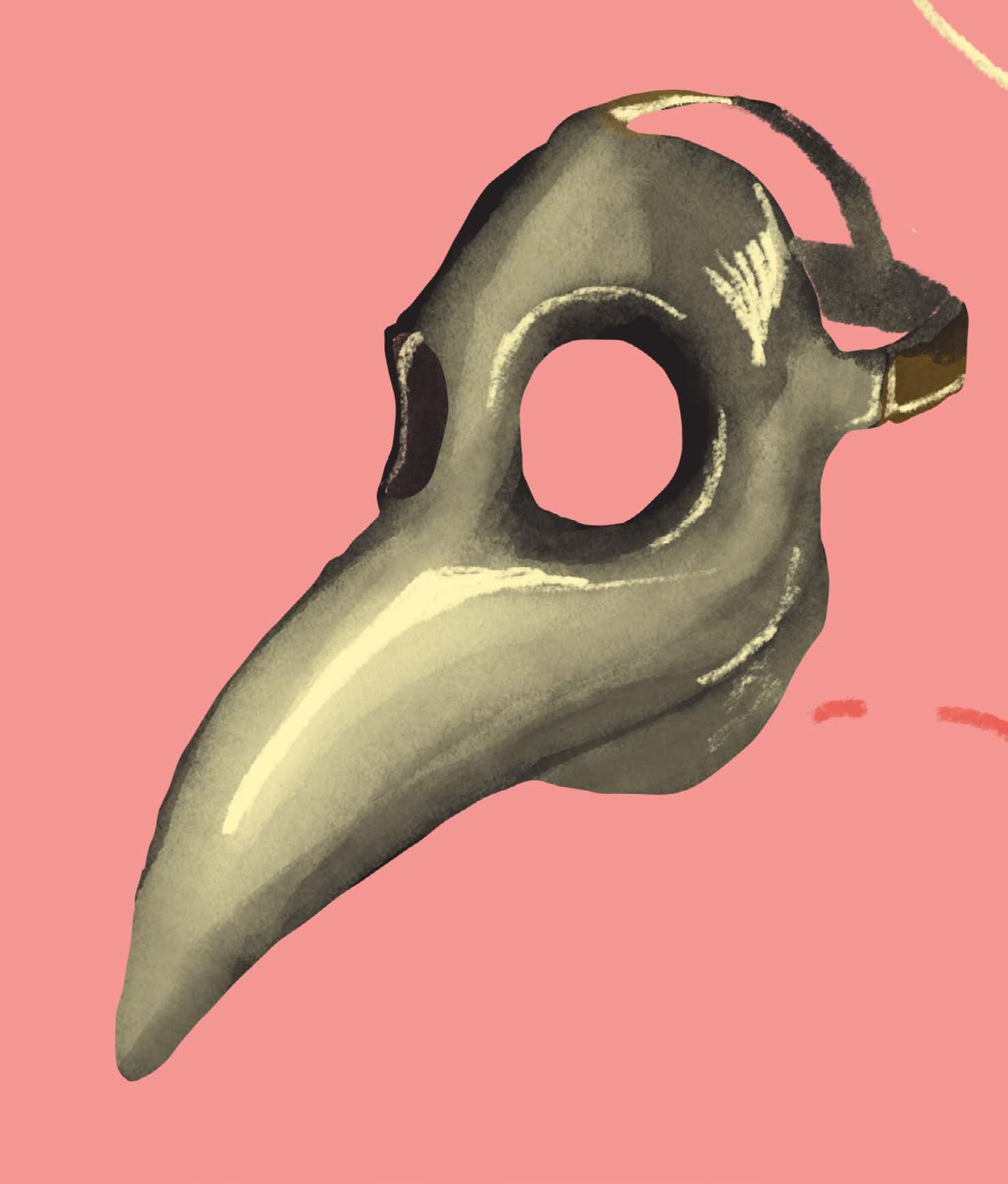
oppor tunities to become more involved in pub lic policy discussions, both at the public level and with stakeholders.”


“It’s important to provide knowledge and support and research evidence for public perspectives that might influ ence government policy,” she added.
Starting in 2023, Jones and her research assistant plan on taking a comprehensive approach by developing and analyzing literature to deter mine the best practices in policy discussions. Addition ally, Jones aims to organize public sessions and a confer ence paper next spring.
At the end of her one-
year research project, Jones hopes to receive additional funding that will allow her to continue creating, support ing and building a network of historians in health and diseases.
“I’m thinking about pro viding toolkits, for example, for people interested in hav ing that kind of dialogue, both for policy makers but also for historians,” Jones said.
“It is an issue I care a lot about,” she continued. “So, I’m going to try to find a way to build it into all the proj ects that I’m working on.”
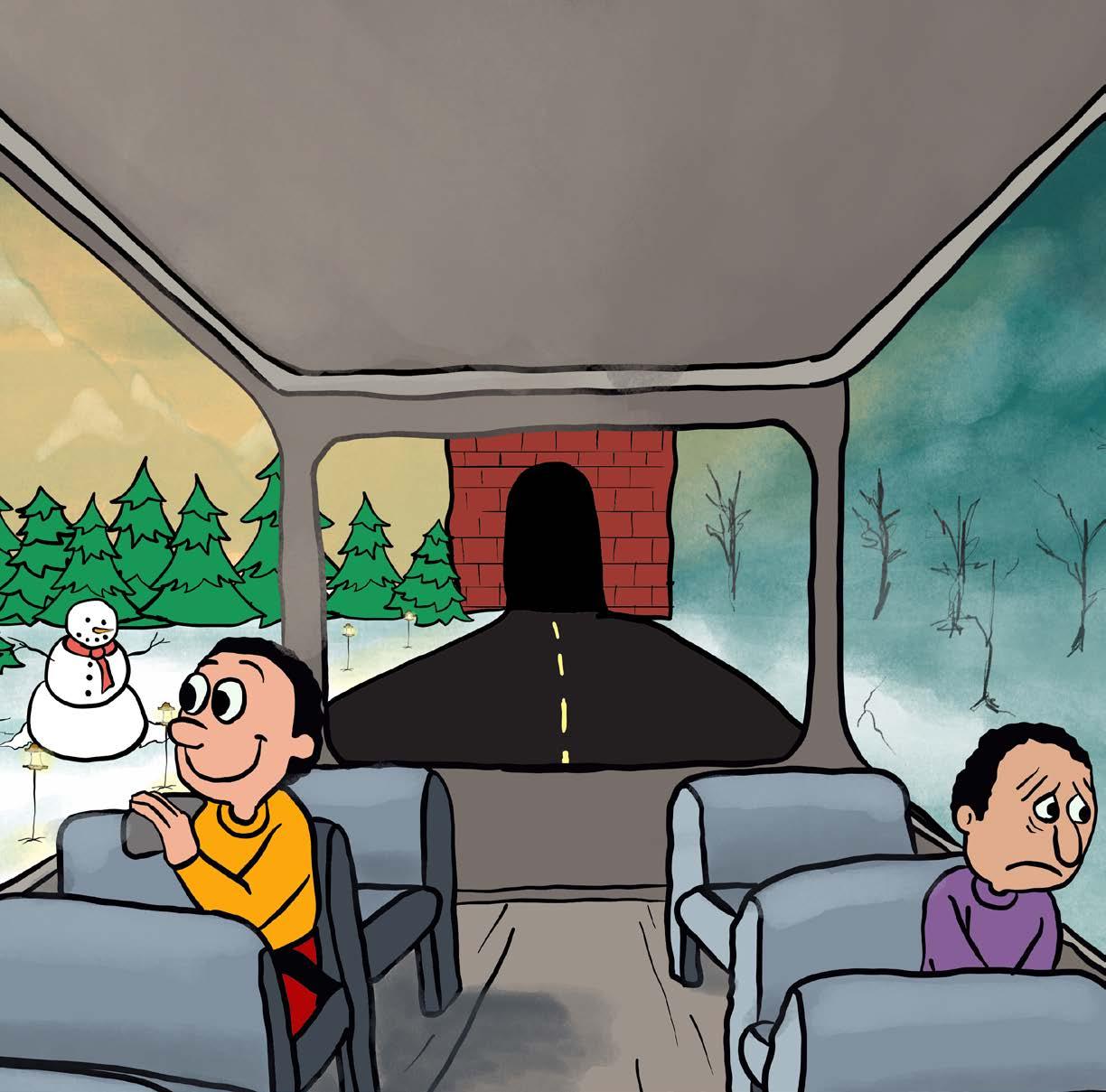
It was the season of light, it was the season of darkness, it was the winter of hope, it was the winter of despair.
Living in Winnipeg’s winter wonderland 12
At the corner of SAD and sad 13
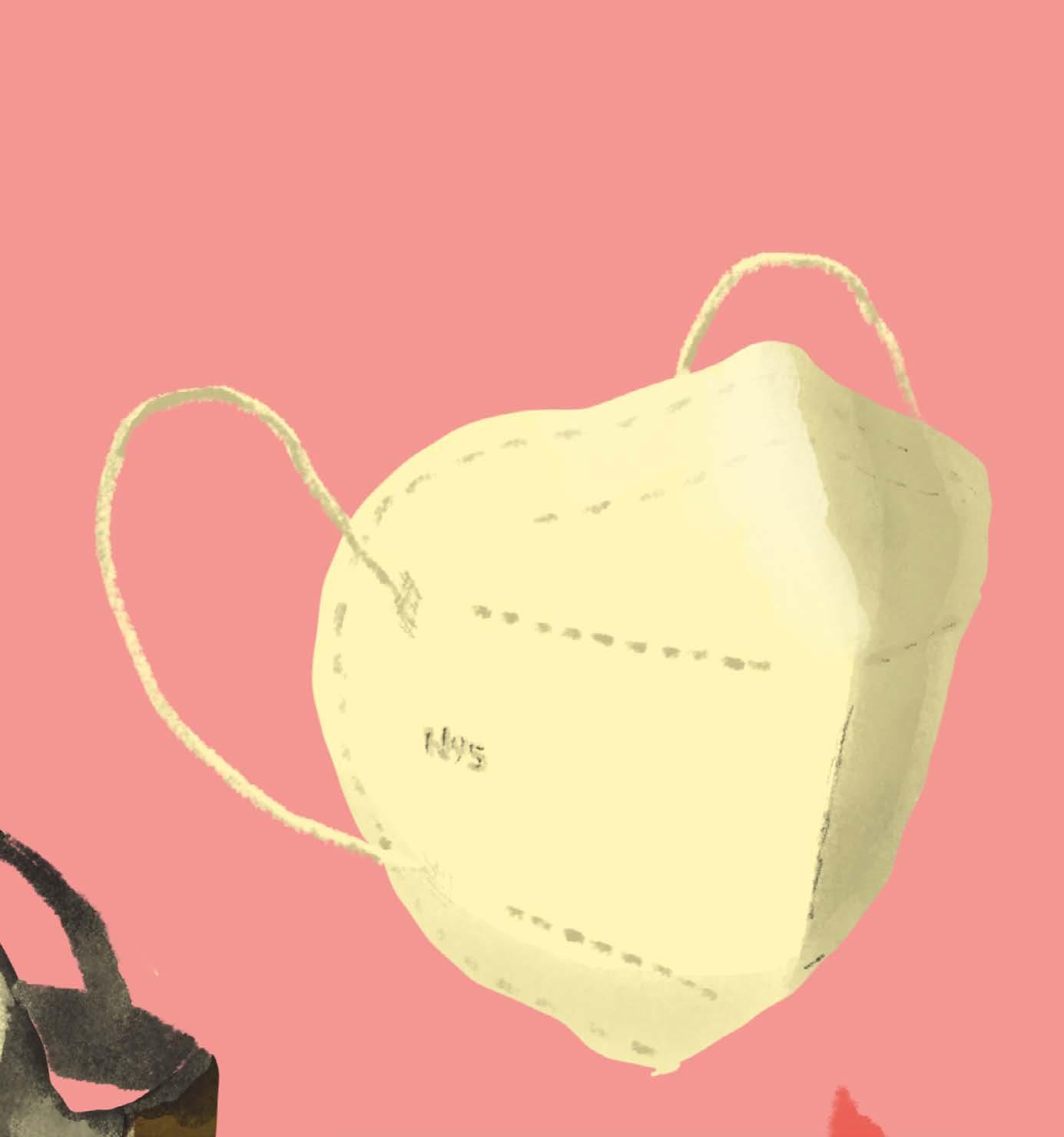
EDITOR-IN-CHIEF ? editor@themanitoban.com
Gillian Brown
BUSINESS MANAGER ? accounts@themanitoban.com
Dhruv Patel
ADVERTISING CO-ORDINATOR ? ads@themanitoban.com


Richard Plant
MANAGING EDITOR ? me@themanitoban.com
Grace Anne Paizen
COPY DESK ? copy@themanitoban.com

Ezra Taves (ed.)
Morgan Heck
NEWS DESK ? news@themanitoban.com
Matthew Merkel (ed.)
Colton McKillop (ed.)
Ashley Puchniak
Alicia Rose
RESEARCH & TECHNOLOGY DESK ? research@themanitoban.com
Elah Ajene (ed.)
Robert Moshe Thompson
COMMENT DESK ? comment@themanitoban.com
Sarah Cohen (ed.)
Braden Bristow
Dina Hamid
ARTS & CULTURE DESK ? arts@themanitoban.com
Alex Braun (ed.)
Damien Davis
Jessie Krahn
SPORTS DESK ? sports@themanitoban.com vacant, applications open (ed.)
Quinn Mayhew
PHOTO DESK ? photo@themanitoban.com Ebunoluwa Akinbo (ed.)
Faith Peters
DESIGN DESK ? design@themanitoban.com
Matthew Doering (ed.)
Taeran An
GRAPHICS DESK ? graphics@themanitoban.com
Dallin Chicoine (ed.)
Jenna Solomon
AUDIO DESK ? audio@themanitoban.com
Harmatpreet Brar (ed.)
SOCIAL MEDIA DESK ? social@themanitoban.com
Jory Thomas (ed.)
Violet Baker
VOLUNTEERS THIS ISSUE ?
LJ Fulugan

Ellen McGregor
VOLUNTEER STAFF ? interested in volunteering? email me@themanitoban.com today!
THEMANITOBAN.COM

109 HELEN GLASS BUILDING UNIVERSITY OF MANITOBA WINNIPEG, MB 204. 474. 6535
The Manitoban is the official student newspaper of the University of Manitoba. It is published monthly during the summer and each week of regular classes during the academic year by the Manitoban Newspaper Publications Corporation.
The Manitoban is an independent and democratic student organization, open to participation from all students. It exists to serve its readers as students and citizens.
The Manitoban is a member of the Canadian University Press, and our journalistic standards can be found on the Manitoban’s website.
The newspaper’s primary mandate is to report fairly and objectively on issues and events of importance and interest to the students of the University of Manitoba, to provide an open forum for the free expression and exchange of opinions and ideas and to stimulate meaningful debate on issues that affect or would otherwise be of interest to the student body and/ or society in general. The Manitoban serves as a training ground for students interested in any aspect of journalism.
Students and other interested parties are invited to contribute to any section of the newspaper. Please contact the appropriate editor for submission guidelines.

The Manitoban reserves the right to edit all submissions and will not publish any material deemed by its Editorial Board to be discriminatory, racist, sexist, homophobic or transphobic, ableist or libellous.

Opinions expressed in letters and articles are solely those of the authors. Editorials in the Manitoban are signed and represent the opinions of the writer(s), not necessarily those of the Manitoban staff, Editorial Board or the publisher.

A “volunteer staff” member is defined as a person who has had three volunteer articles, photographs or pieces of art of reasonable length and/ or substance published in the current publishing year of the Manitoban.
Any individual who qualifies as a volunteer staff member must be voted in by a majority vote at a Manitoban editorial board meeting. Elected representatives and non-students may be excluded from holding votes as volunteer staff members in accordance with the Manitoban Constitution.
All contents are ©2022 and may not be reprinted without the express written permission of the Editor-in-Chief.
UMSU organizes 2022 Holiday Hamper program Donations may include money, new children’s toys and hygiene products
 Alicia Rose, staff
Alicia Rose, staff
The University of Mani toba Students’ Union (UMSU) is holding its annual Holiday Hamper program, which works to provide sup port to students in need and their families every holiday season.
This year, the program is accepting donations of new toys for children up to 14 years of age and hygiene products, as well as monetary contribu tions.
In-person donations can be made at the UMSU Service Centre, and online donations can be submitted through UMSU’s website under the Holiday Hamper section.
UMSU vice-president com munity engagement Elishia Ratel said that this year’s pro gram offers a combination of grocery gift cards and ham pers containing toys and hygiene products.
Ratel said that the gift cards give students the ability to buy items for themselves that suit their personal needs.
Last year, when UMSU was forced to alter its typical approach to the program due to the COVID-19 pandemic, it opted to include gift cards. That year, the Holiday Ham per program was able to help about 230 households.
Ratel said that the program is aiming to assist a similar number of people this holiday season, with the goal being to “raise about $30,000 and col lect as many toys, hygiene products and menstrual prod ucts as we can.”
Different tiers of monetary donations are available based on how many people a ham per is providing for, with $150 for one person, $250 for two to three people, $350 for four to five people and $450 for six people or more.
Student groups and organ izations have also been con tributing to the Holiday Ham pers. The University 1 Stu dent Council will be hosting a Christmas Social on Dec. 23, and a portion of the proceeds will be donated to the ham
per program. Additionally, the Nursing Students’ Associ ation (NSA) is gathering funds from students in the program to make a group donation, and is collecting toys and hygiene products for the hampers.
Ratel noted that winters and the holiday season in Winnipeg can be difficult for many people. She said that the Holiday Hamper program is a way to remind people that “we are all here to help each other.”
UMSU is holding its own events to raise money for the hampers throughout the month, including a movie night on Dec. 1, a holiday kara oke night on Dec. 2 and photos with Santa on Dec. 5 and 6.
Naveena Thakur, the UMSU representative for the NSA, explained that both the NSA and the Graduate Nursing Stu dents’ Association are work ing together to raise funds for the hamper.
The two associations are collecting both monetary and in-person donations, which
can be made through the NSA website and at the nurs ing lounge in room 202 of the Helen Glass Centre for Nurs ing, respectively.
During last year’s program, the NSA gathered donations from both faculty members and students to contribute to the Holiday Hampers.
With the rise in tuition and cost of living this year, Tha kur said that her association
believes it is important to help students in need and their families through this holiday season.
More information on the Holiday Hamper program can be found on UMSU’s In stagram page, or on its web site. news@themanitoban.com
New UMSU community rep position in the works
Racialized student rep, guidelines part of working group’s amendments
Matthew Merkel, staffThe University of Mani toba Students’ Union (UMSU) has formed a committee dedi cated to creating more guid ance within UMSU’s gov erning documents for its com munity representatives
Created on Oct. 6, the com munity representative reform working group aims to assess the concerns and current knowledge of UMSU members in order to create guidelines for the UMSU board’s com munity repre sentative pos itions.
The work ing group is made up of the UMSU governance commit tee, UMSU president Jaron Rykiss and UMSU vice-presi dent student life Tracy Karu hogo. Any interested UMSU members are also allowed to join.
UMSU governance commit tee chairperson and chair of the new working group Ivan Nuñez Gamez said that issues with vagueness and a lack of guidance in the governing documents sometimes pre vents elected community rep resentatives from implement ing advocacy goals and ideas.
“There’s essentially no guidance,” Nuñez Gamez said.
He said the group’s amend ments will help give guidance and a “constitutional backup” to whatever community reps hope to achieve.
Nuñez Gamez said that the committee sent out a ques tionnaire to current UMSU community representatives, and that the responses were then reviewed by the working group.
“We want to at least pres ent a notice of motion in the last [board] meeting of the year,” he said, adding that if this were the case, the motion should be voted on in the first UMSU board meeting of Janu ary.
The timing of the motion would also allow students to run for a new community rep resentative position being cre ated by the working group. The racialized community representative would advo cate for racial ized students at the U of M.
to have an additional position to represent those perspec tives.
Nuñez Gamez pointed to the example of the Stop AntiAsian Racism presentation and a motion for a statement to be released in support of students affected by human rights violations in the occu pied West Bank as indications of a need for a racialized com munity representative, since these concerns were brought forward by students and not UMSU board members.
The data obtained has helped shape the recom mendations of the commit tee, which were then com piled into a drafted document. Amendments to the draft were made in a Nov. 16 meet ing, and it will continue to be reviewed by committee mem bers.
Nuñez Gamez said that once the review process is complete, he will present the amendments at an UMSU board of directors meeting. He estimates that this will hap pen in early December.
“We really, really want to do this before the elections,” he said.
Nuñez Gamez said that not having a racialized com munity representative on the UMSU board of directors leaves many students without a voice. Though, some faculty student associations already have a racialized student rep resentative.
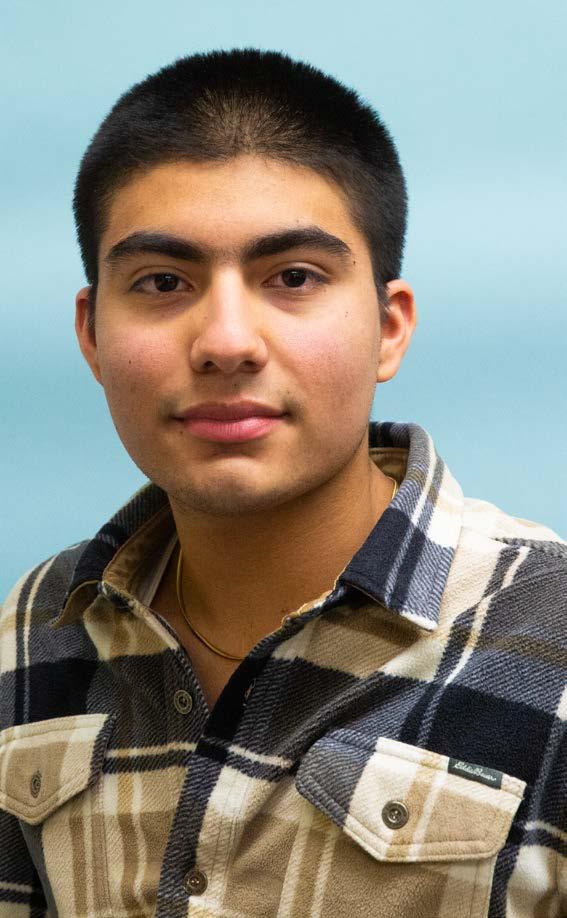
Nuñez Gamez stated that having a Black students’ com munity representative was a good thing, but that he believes the varying experi ences of racialized students on campus make it necessary
“There is precedent that it’s students at large who are advocating on behalf of their communities, when it shouldn’t be the case,” he said.
“If there is that precedent, then why not create a position to facilitate those concerns?”
The creation of the posi tion would mean that $2,000 would have to be taken out of each of the $16,000 commu nity initiative funding bud gets other community repre sentatives receive.
Although Nuñez Gamez is concerned that the money taken from each communi ty’s budget might upset other community members, he is confident that it will not adversely affect any group.
Additionally, he claimed
that many of the community representatives do not use all of their funds, so the money often ends up going back to UMSU.
Nuñez Gamez said he does not see the redistribution of funds as defunding communi ties, but rather as the empow erment of another commu nity.
“It’s essentially enhancing the entire voice of the BIPOC community,” he said.
s essentially enhancing the entire voice of the BIPOC community
— Ivan Nuñez Gamez, UMSU governance chairpersonphoto / Faith Peters / staff
Community honours Transgender Day of Remembrance
Day remembers transgender victims of violence
Matthew Merkel staffP eople from across the country took part in Transgender Awareness Week from Nov. 13 to 19. Each year, these seven days celebrate transgender people and communities, and also raise awareness regarding the violence and discrimination that these communities face.
The week leads up to Trans gender Day of Remembrance on Nov. 20, which remembers the victims of transphobic violence.
Transgender commun ity advocate Gwendolyn Ann Smith established the day in honour of Rita Hester, a Black transgender woman killed in
1998.
Since its inception, the day has memorialized the lives of transgender people who have been killed as a result of trans
or older identified as trans gender in 2018.
The same study showed that from age 15, transgender people living in Canada are more likely to have experi enced vio lence and inappropriate behavours at work, in pub lic and online than cisgender people.
phobic violence.
The Rainbow Pride Centre (RPC) held a Transgender Day of Remembrance ceremony in the RPC lounge on Monday, Nov. 21, where community members gathered in a sup portive sharing space.
According to Statistics Canada, an estimated 75,000 people in Canada aged 15
In 2020, 259 people in Can ada from 2SLGBTQIA+ com munities were the target of police-reported hate crimes.
Federal Minister for Women and Gender Equality and Youth Marci Ien issued a state ment of solidarity with the transgender community on Transgender Day of Remem brance.
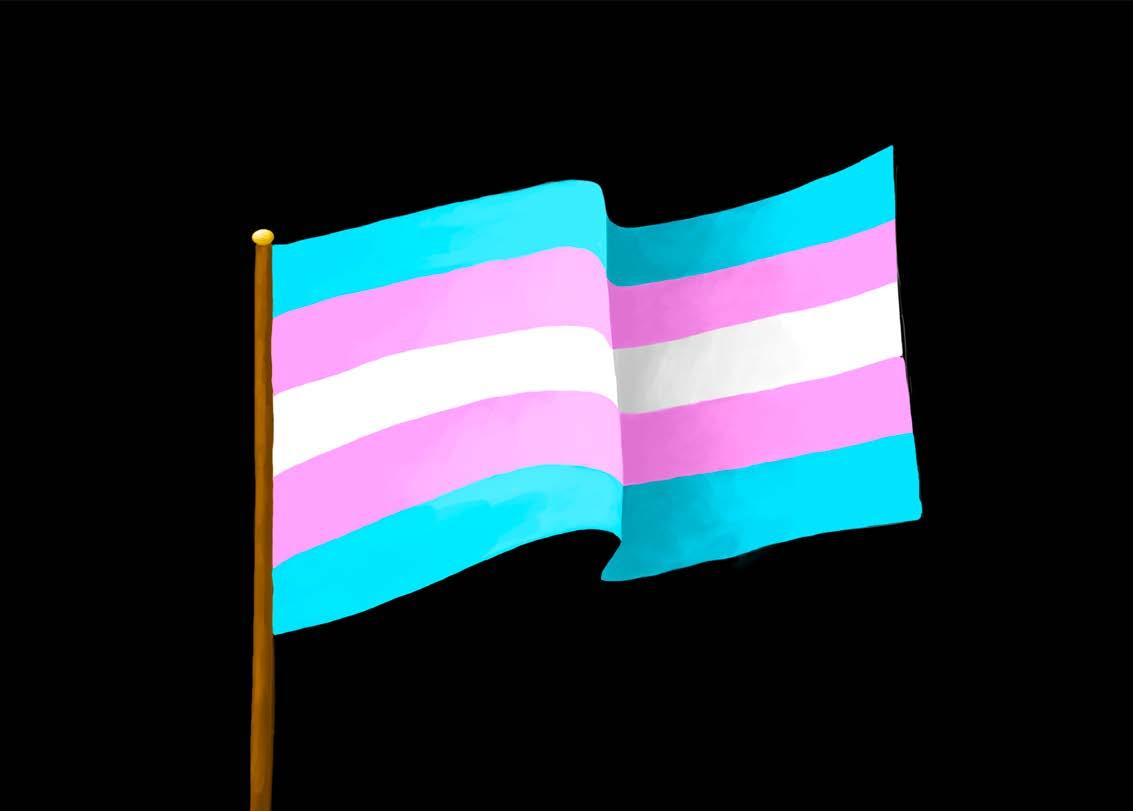
“We all have a duty to fight the social stigma affecting this group,” Ien said.
“We strongly encourage everyone in Canada to support [2SLGBTQIA+] communities, and especially trans people, in order to end the systemic dis
U of M prioritizing safety during exam season
Early darkness, more time spent alone on campus potential risks
Matthew Merkel, staffAs the exam season approaches and the days start to get darker, the U of M is emphasizing the importance of staying safe on campus
According to University of Manitoba director of security Gordon Perrier, exam season can cause students to become distracted and often unaware of their surroundings.
Perrier emphasized that at night, students should put away their phones when walking, and remind them selves to be alert.
“The cam pus here is 700 acres,” he said. “It is a huge place. It is a small city.”
“From only a statistical point of view, crime events or even policy violations are pretty small, but that doesn’t mean that they don’t occur.”
Although studying alone in secluded areas may be ideal for many students, Perrier indicated that such places may not be the safest option. He said that the U of M has multiple secure study ing areas on campus that are brightly lit and conducive to studying privately, like librar ies.
Perrier said that while studying, setting time limits and checking in with others is a great way to increase per sonal safety.
He noted that during the day, areas that have high foottraffic such as the tunnels are often very secure due to many people being in the area.
He highlighted several ser vices available to students and faculty to help keep them selves and other people safe, including the U of M secur ity non-emergency and emer gency numbers.
Additionally, both the Fort Garry and Bannatyne cam
patched to the device loca tion, and will typically arrive within two minutes.
There are also nearly 1,000 closed-circuit television sec urity cameras at the U of M in classrooms, parking lots, hall ways and other locations.
Also available is UM Safe Walk, a program that allows those at the university to request for security to walk with them around campus. Safe Walk is available 24 hours a day, every day of the week, and can be requested by calling the secur ity non-emer gency line or through the university’s UM Safe app.
on there and it will tell sec urity where you are and map it,” he continued. “Even if you move, we know where you are, and then we can come and meet you and provide you assistance.”
crimination that occurs based on sexual orientation, sex characteristics, and gender identity and expression.”
puses have Code Blue emer gency poles and Emergency Red phones.
Located across each cam pus and in campus parking lots, the Code Blue emergency poles are designed to project a blue light 24 hours a day. There is a two-way speaker on each pole so that students can communicate with security guards if needed.
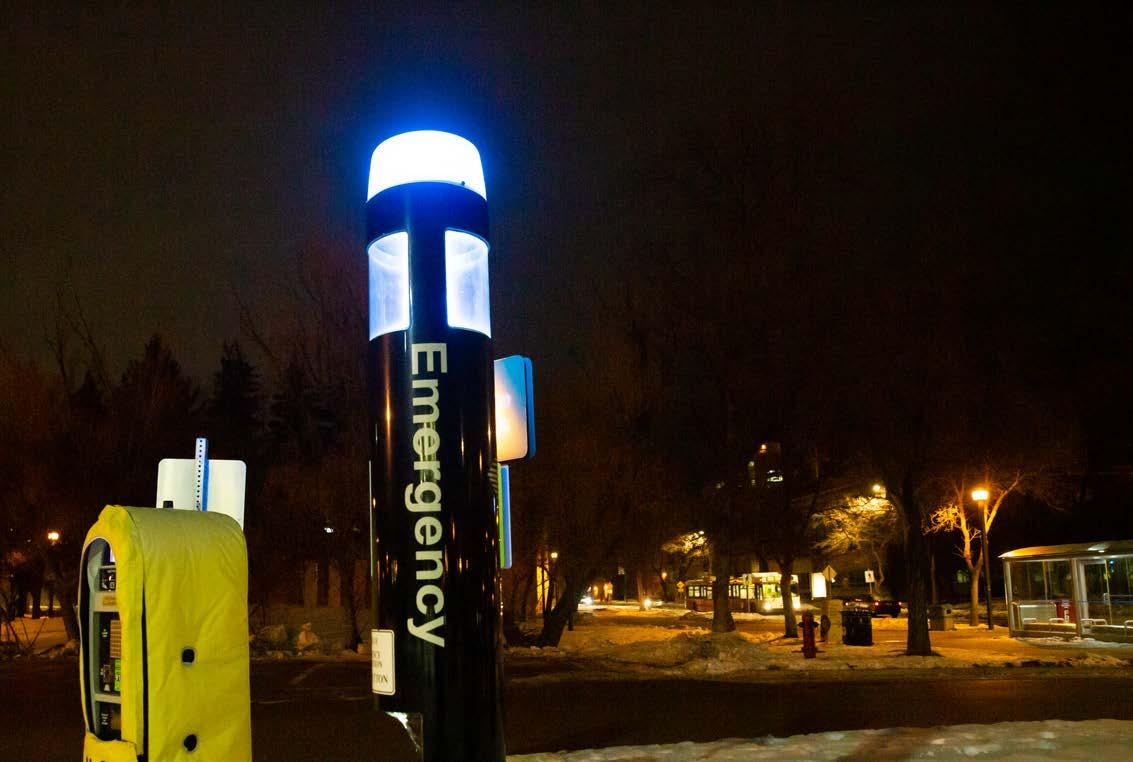
Emergency Red phones can be found on almost every floor in every building across both campuses according to the security services website, and also provide the ability to speak with campus security.
When either of these devices are activated, secur ity personnel are priority dis
Perrier encouraged stu dents to download the app, which he said has lots of inter active features that increase safety. In addition to request ing a Safe Walk, students can use the app to contact security and emergency services.
UM Safe also allows stu dents to be secure with out involving security servi ces by letting the user share their location with a friend or family member, who can track the user’s movements on cam pus and across the entire prov ince to make sure they safely arrive at their intended des tination.
“The UM Safe App is bril liant,” Perrier said.
“You can touch one button
However, if that hasn’t been activated, Perrier said that security services will not know where the student is.
Although the app has around 5,000 subscribers, Per rier wishes that more of the U of M’s 29,844 students would utilize it.
Perrier said that these ser vices are available throughout the year, and that the same number of security personnel are working whether the U of M is on break or classes are in session.
Perrier said that if students are uncomfortable, or even if they are not sure of something they are seeing, they should contact security services.
“I’m a real big believer [that] 90 per cent of the time, your
instincts are correct,” he said. “We’re happy to come.”
In case of an emergency: Call 911 first (Ambulance, Fire, Police)
Security con tact information: 204-474-9312 (non-emer gency — Fort Garry campus) 204-789-3330 (non-emer gency —Bannatyne campus) 204-474-9341 (emergency)
555 from university land lines #555 from Rogers and Bell MTS cell phone customers Code Blue stations and Emer gency Red phones also provide direct emergency communi cation with security services
Email security services at emergency_response@ umanitoba.ca.
m a real big believer [that] 90 per cent of the time, your instincts are correct”
— Gordon Perrier, director of U of M security servicesgraphic / Jenna Solomon / staff
“We all have a duty to fight the social stigma affecting this group”
— Marci Ien, federal minister for women and gender equality and youth
Deadline for Welcome Mentors applications approaches
Program involves experienced students mentoring new international students
Colton McKillop staffThe application dead line to become a welcome mentor for new international students in the upcoming winter term is fast approach ing, with Dec. 2 being the last day to apply.
The program assigns new international students to an experienced University of Manitoba student, who will help guide them as they adjust to student life in a potentially unfamiliar culture.
Nora Ampomah, the inter cultural programs co-or dinator at the U of M Inter national Centre, said that the Welcome Mentors program exists to help integrate new arrivals into the post-second ary environment.
“Although moving to a new country is exciting, it can be a bit challenging for inter national students,” she said, adding that this can be espe cially true for students who have never studied in or vis ited Canada before.
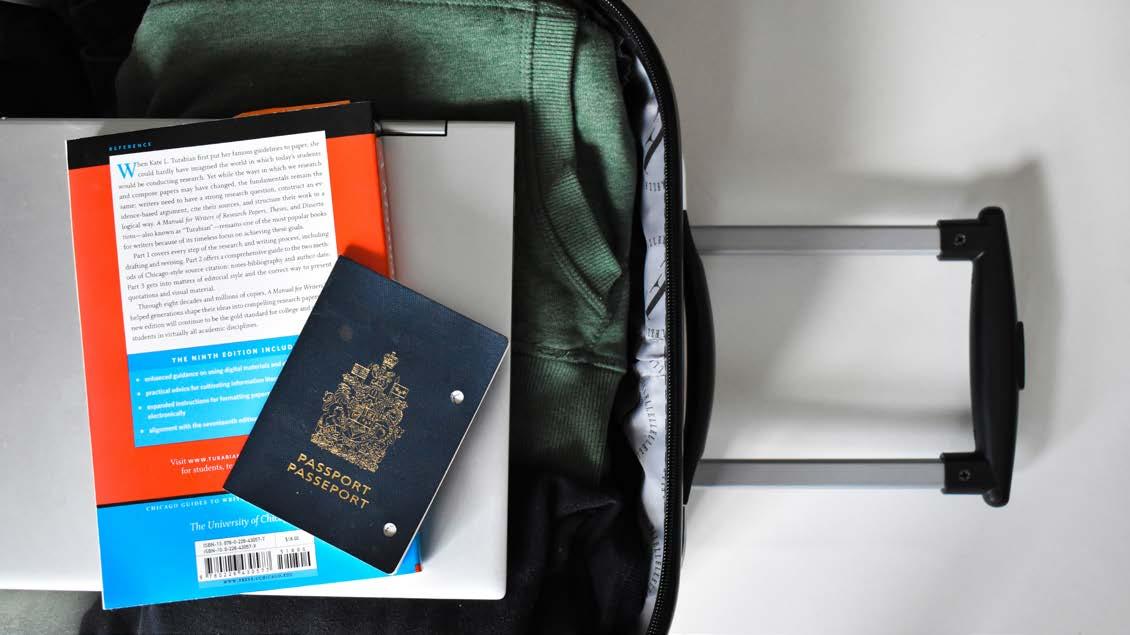
In the 2021 fall term, the University of Manitoba pro vided education to nearly 6,800 international students,
which made up 21.9 per cent of the total student popula tion.
Welcome Mentors will pro vide one-on-one assistance to the new students they are paired with, helping them find academic resources and complete tasks such as regis tering for courses, paying fees and getting a student ID or bus pass.
Ampomah said that men tors can also refer students to services on campus, as well as other non-academic resour ces.
“Usually new international students have to navigate cul tural shock, especially dur ing the winter term,” she explained.
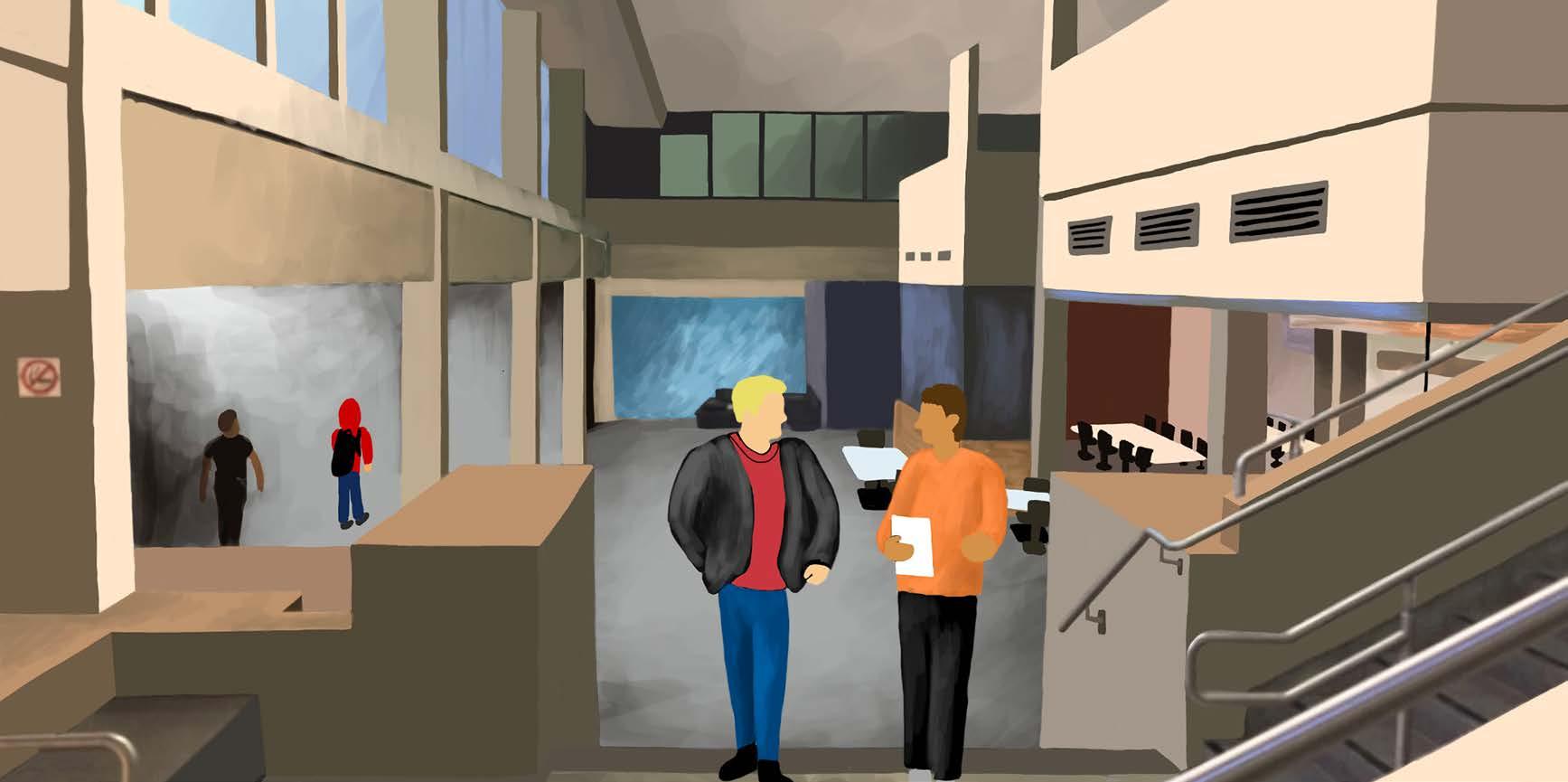
“They don’t know how cold it is in Winnipeg, so mentors are able to connect them to the right resources in terms of giving them recommenda tions on where they could get, for example, a good winter jacket, where they could get groceries, get a bank account.”
Any domestic or inter national students may apply to become a mentor, whether they are in undergraduate or
graduate studies.
The mentorship lasts for one semester, and mentors are encouraged to communi cate virtually with their men tees for an hour and a half per week to meet the required total of 15 hours throughout the term.
Those who are accepted as mentors will receive training on how to best assist students who are new to student life in Canada, and will be eligible to receive credit on their co-cur ricular record.
Similar mentorship pro grams for international stu dents exist at other Canadian universities, such as the Uni versity of Calgary, York Uni versity and the University of Toronto Mississauga.
Ampomah noted that most of the mentors are former mentees.
“New international stu dents really value the sup port they receive from the program, and because of that, many of them return to the program as volunteers them
selves, so they can give back to another new student,” she said.
“It’s a great way for students to enhance their cross-cul tural competence by develop ing a relationship with a peer who may be from a different country or culture.”
news@themanitoban.com
Student exchange program set to receive applications
Applications for summer 2023 exchange program open Dec. 1
Ashley Puchniak, staffApplications for the U of M’s student exchange pro gram are set to open on Dec. 1.
Until Jan. 31, 2023, stu dents will have the oppor tunity to apply for the stu dent exchange program tak ing place in the summer and fall terms of 2023, as well as the winter and summer terms of 2024.
The program allows stu dents to travel elsewhere for their studies while earning credits towards their degree at the U of M.
Students can study in places such as Costa Rica, Japan, Australia, Singapore, France and the United King dom. They will have the option of going on exchange for one semester or for the entire year.
The U of M is partnered with 50 institutions around the globe in over 20 different destinations.
Naomi Fujiwara, the stu dent exchange co-ordinator at the U of M, outlined that students need a GPA of 3.0 or above, must be in at least their second year and have com pleted at least 30 credit hours as some of the requirements
to participate in the student exchange program.
Fujiwara also emphasized that students interested in an exchange must “demonstrate their strong personal, profes sional and academic goals.”
Additionally, students will also need to show that they can adjust to living and study ing in a foreign country while presenting a reputable image as students of the U of M.
Some other requirements include being registered in a faculty other than university 1 by the time their exchange begins, maintaining full-time student status while abroad and presenting evidence of proficiency in a language other than English if it is rel evant to their planned studies.
Fujiwara mentioned that international students are also eligible for the program.
The program’s costs can vary depending on the dur ation of the exchange, where the student is going and whether the person going on exchange is a domestic or international student.
“One thing students should know for sure is that for the exchange program, students pay their tuition fees to their
home institution,” she said, explaining that domestic and international students would still pay their respective tuition rates when studying abroad.
Fujiwara encouraged stu dents to take electives while on exchange, and not just courses specific to their major or minor.
She explained that while this program is for academic purposes, it is also a chance for students to “get out of Manitoba and get the different experiences that they can’t get while they are still here.”
“As much as I want them to do well in academic studies, I also want them to have the time to immerse themselves in the culture they want to,” she said.
Fujiwara explained that this program is beneficial to both a student’s academic and personal development.
“With this exchange, it’s not just about studying over seas and travelling, but [it] also contributes to your per sonal growth,” she said.
Chimdinma Chijioke, a fourth-year international stu dent at the U of M majoring in political studies, offered some
insight into the program.
Chijioke went on exchange to Hungary for a six-credithour course that lasted about three weeks.
She explained that the course was similar to the U of M in terms of grading scale.
“That was easier on my end, to understand how the assign ments were going to go and how the grades were going to translate,” she said.
Chijioke stated that her experience was academic, but also culturally immersive.
“We learnt a bit of Hungar ian language, we tried some of the foods, we tried some tradi tional crafts and outfits,” she said.
“We also got to go onto
many tours, and visited lots of significant places in Hun gary.”
Chijioke said she thinks that this program would be beneficial to any student who would like to take a class they are interested in, but be a tour ist at the same time.
“Going on exchange was really special, and I’m glad that I had that opportunity,” she said.
More information about the student exchange program can be found on the Universi ty of Manitoba’s website.
news@themanitoban.com
Research & Technology
The scientific significance of traditional knowledge
Non-western medicine, ethnobotany a key contributor to world research
Robert Moshe Thompson, staffTraditional and nonwestern ways of know ing are often othered in the sciences. Oftentimes, people refer to western medicine as “conventional” and trad itional medicine as “alterna tive.”
For example, Indigenous communities in Canada used controlled burning to pre vent forest fires, but many sci entists ignored this practice until recently.
Some traditional Indigen ous practices were even out lawed. The Canadian govern ment placed a ban on trad itional medicine and cere monies that lasted several decades.
Today, researchers are beginning to realize the value of non-western science.

After scientific analysis, certain folk medicines have been shown to have valuable properties.
Camel urine has been used in traditional healing in parts of Asia, and scientists have found that it contains com pounds that are toxic to can cer cells and protect the liver.
The process of using folk medicine to create lab-tested medications is known as bio prospecting. Although this type of research has been occurring in one form or another for hundreds of years, it has become much more advanced in recent times.
During this period of growth and advancement, the scientific community began to give more consideration to the ethical concerns of their research.

Before this time, the majority of bioprospectors believed that knowledge of the environment was world heritage that anybody could utilize freely. This prevented them from considering that the people who develop such knowledge should have some sort of rights over what they discovered.
The United Nations began recognizing the intellec tual property rights of com munities who use traditional knowledge in 1992. Under a 1992 law, companies would have to compensate commun ities whose knowledge they use in making products.
In Viet nam and Laos, domestic bio prospecting com panies aimed to stimu late the economy in regions where they researched. They also expected their studies to stimulate the development of infrastructure.
The study of the trad itional relationships between humans and plants is known as ethnobotany. Many crucial drugs have been developed using Indigenous and trad itional knowledge.
Ken Paupanekis, a Cree lan guage instructor at the U of M, said that his community had traditional remedies to treat skin cancer.
For external tumours that appeared on the skin, the warm carcass of a young rab bit would be partly skinned and placed over the growths to extract the cancerous cells.
This is thought to prevent the tumour from spreading to other parts of the body.
Paupanekis believes that this cancer remedy worked because of osmosis — a bio logical process that allows flu ids to move through mem branes.
His community also had a remedy to treat boils. Dried spruce sap would be chewed, then mashed together with lard and placed in a cloth on the affected area.
“I often wondered if you could do that with the acne which young people get,” Pau
panekis sug gested. The spruce sap mix ture extracts pus, so Pau panekis thinks that it could be adapted to extract acne-caus ing agents.
Paupanekis believes that increased knowledge of such traditional remedies would benefit the scientific com munity. However, not all of these remedies have survived to the present day.
He once heard a story about a medicine woman in the east Lake Winnipeg area who was able to cure cancer. She treated a female relative’s breast can cer using an unknown mix
ture of ingredi ents from the surround ing forest. The mixture would be placed on the tumour for some time, and when the affected area was ready, the growth was able to be easily extracted.
Since the contents of the mixture were unknown, the recipe for this treatment is most likely lost to history.
“It’s too bad that it wasn’t recorded,” Paupanekis lamented.
“Even if you did chemical analysis of these things she used, that would tell you a lot. It would help out western medicine as well.”
Perfectionism is a dangerous cycle
The experience of a science student living with perfectionism
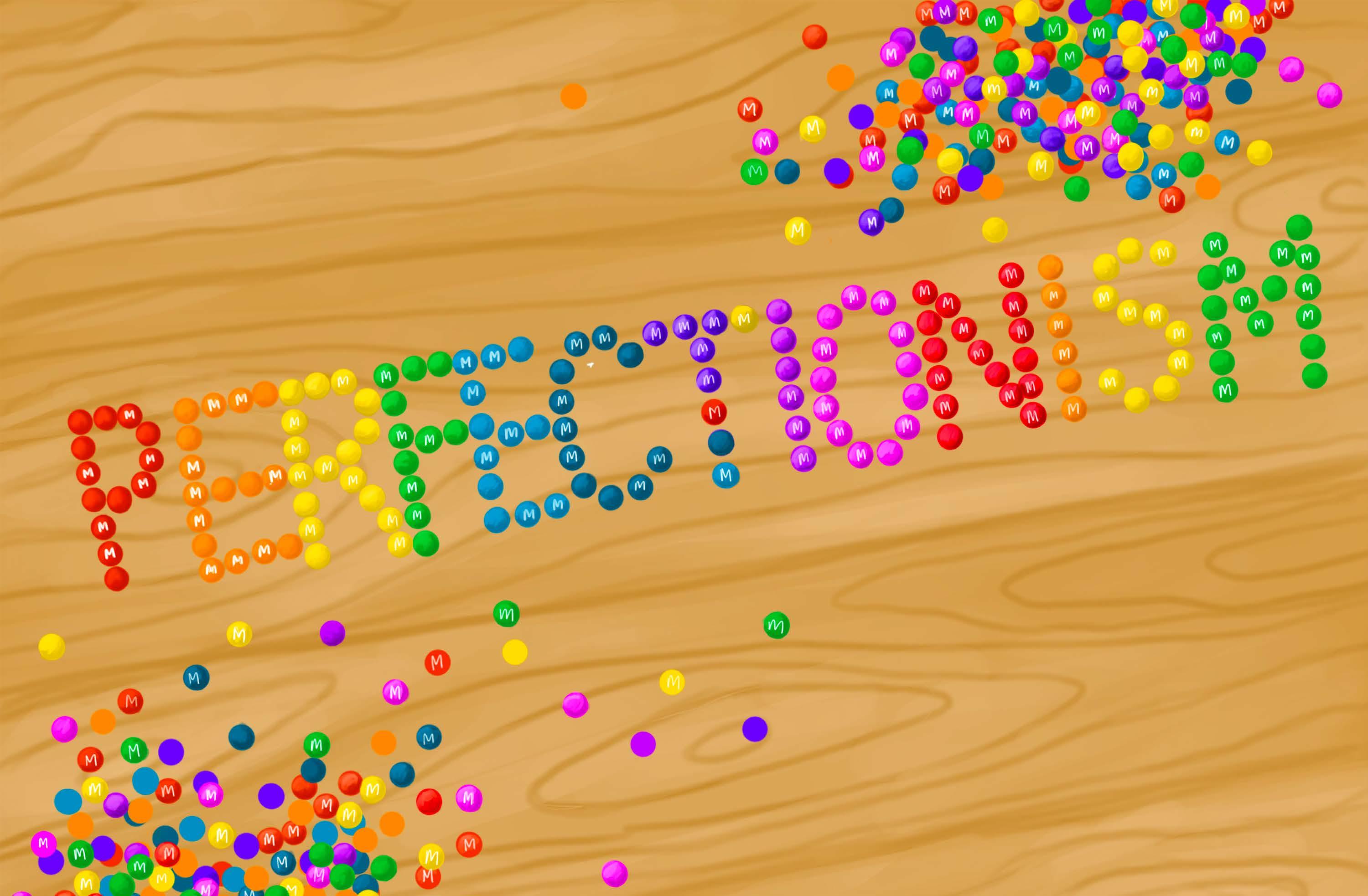 Harmatpreet Brar, staff
Harmatpreet Brar, staff
This editorial will change the world. An epiphany of nostalgic notori ety and avant-garde concep tion that historians will say encapsulated the zeitgeist of the 21st century.
All I need to do is pick a topic and write about it. How difficult can that be?
I could write about the recent controversy surround ing the Ticketmaster and Live Nation monopoly. Every one would read an article with Taylor Swift in the head line. But that is not original. News outlets everywhere have already reported on it.
Okay, I need a more creative take. Maybe I could discuss prevalent changes to the pod casting landscape that have occurred since the beginning of the COVID-19 pandemic. But what if I am not know ledgeable enough about pod casts to develop an argument? Also, absolutely no one will be excited to continue reading about the effects of COVID-19.
This is so frustrating. Okay, focus, Harmat. All I need is an innovative topic that I am super informed about. Then my editorial can be emotive and compelling. Remember,
the aim is to change people’s lives within 800 words. Sim ple.
What if I propose that all final exams should consist of project-based learning? Though, I do not want every one to assume I have a low GPA.
I could argue that society should not expect 17-year-olds to have their future careers planned out. Yes, that is a relatable take! My only con cern is revealing that I am insecure about my life deci sions. That is not a level of vulnerability I am ready to achieve with strangers.
That is a glimpse of my pro cess when writing this editor ial. You may already be famil iar with the cycle of becoming inspired with an idea, over thinking it and then becom ing discouraged after you veto it. But what might be differ ent between you and I is the frequency, severity and dur ation of which that occurs. In five weeks, I repeated this pro cess with no less than 50 edi torial topics and seven mental breakdowns.
I attribute my tendencies to perfectionism, which the American Psychological Asso ciation defines as “the ten
dency to demand of others or of oneself an extremely high or even flawless level of per formance, in excess of what is required by the situation.” In my experience, this manifests as self-destructive thoughts and behaviours, excessive concern for social evaluations and an overwhelming ten dency to procrastinate.
I spend hours hyper-focus ing on simple tasks. I spend days lamenting over poor performance, weeks avoid ing vital conversations and years attempting to appease people. And I will likely spend my entire life cycling through feelings of inadequacy, obses sion and paranoia.
Perfectionism is exhausting and can be debilitating.
I want people to under stand that perfectionism is about more than just striving to do well. If I do not develop consistent coping mechan isms, these tendencies will consume my life.
I have always been a perfec tionist, but the effect this has had on my life has fluctuated over time. In September 2021, I entered the faculty of science at the University of Manitoba and began attending classes virtually. Thus, I communi
cated with new classmates exclusively over Instagram and Telegram. During this time I was also meeting lots of high-achieving students completing pre-requisites for application to the Max Rady college of medicine.
These circumstances were not conducive to my mental health. Being a perfectionist, I spent hours scrolling through Instagram and LinkedIn pro files, comparing my unedited life to people’s highlight reels.
The severity and frequency of this obsessive behaviour almost cost me my mental health and my grades.
My perfectionism becomes easier to manage whenever I acknowledge that strangers perceive my life the same way I perceive theirs. From the out side, my life looks great. I am managing four classes, three jobs, two student groups and one volunteer commitment.
I am maintaining friendships while fostering new ones, and I am part of communities where I belong.
However, strangers will never know the obstacles I overcome daily. The reverse is equally true, and my goal is to always remember that.
I tend to idolize individuals
and place them on pedestals. I do this because if other people are capable of perfection, then there is a chance that I am, too.
This habit is a trap that I am working to escape. Instead of obsessing over the achieve ments of individuals, I am working to focus on our col lective humanity. That is the true reason I am writing about my perfectionism.
Regardless of our back grounds or identities, we all have limitations to overcome. Whether it is perfection ism, Parkinson’s or parental trauma, singer-songwriter Amanda Marshall said it best: “everybody’s got a story that could break your heart.”
University is a place where we try to hide our imperfec tions in fear of being seen as weak or incapable. I implore you to embrace your imper fections and use them to guide your journey of self-reflection and growth. I do not think this editorial is changing any one’s life, and that is okay. I just hope that readers feel less alone in their humanity.
Give animation its flowers
Animation is not just for kids and deserves more respect
Dina Hamid, staffI was introduced to ani mation as a kid. I grew up watching animated movies and shows from Pixar, Dis ney, Nickelodeon and Cartoon Network. For that reason, ani mation holds a nostalgic fond ness in my heart that has fol lowed me beyond my child hood and into my adulthood.
As I continue to watch ani mated films and series, I’ve noticed that people often believe animation is strictly for kids. This is surprising to me, as I think we are in the golden age of popular, adult-focused animated series like BoJack Horseman, Rick and Morty and Big Mouth
Since a lot of animated content is geared toward young people, animation is largely viewed to be a kid’s genre. Because of this, ani mation is not taken seriously and doesn’t get the respect it deserves, which means that a lot of animated content is underappreciated and under valued.
Before 2001, there wasn’t even an award for best ani mated feature at the Oscars, one of the most prestigious film industry award shows in the world. This is absurd, con sidering that the idea of ani mation long predates trad itional cinema.
Despite being in existence for 94 years, the Academy Awards rarely gives animated films best picture nomina tions, let alone wins.
It is upsetting that anima tion does not always get the recognition it deserves on the biggest stage for film, espe cially given that artists often spend at least four years cre ating and animating the char acters, worlds and stories we love so much. As a result, ani mators rarely get the chance to receive acknowledgement for their hard work and contri
bution to entertainment.
Animation is a powerful and versatile form of story telling that can tell a story in a way that live action cannot.
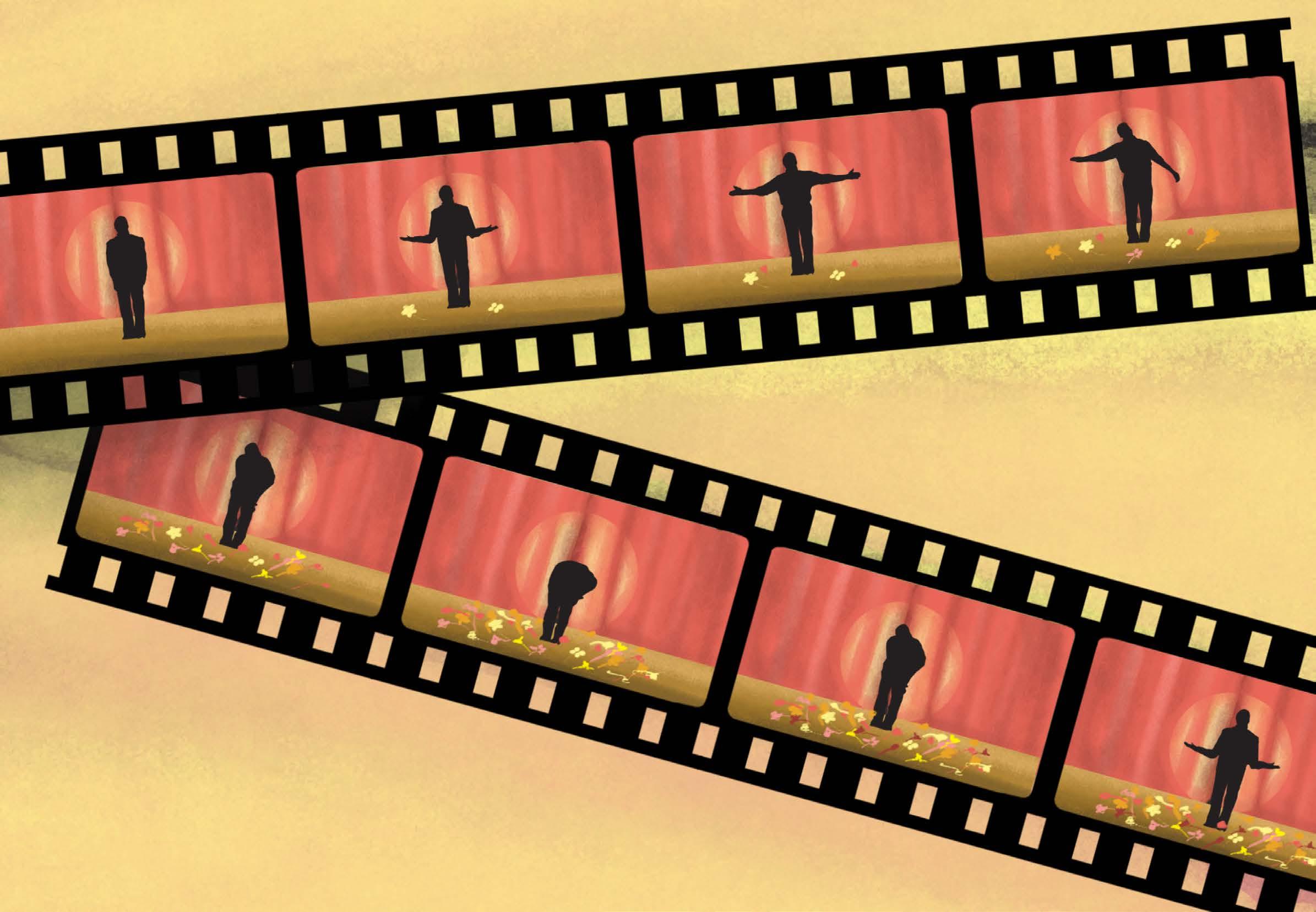
The medium nurtures crea tivity and innovation because within anima tion, anything is possible. So much compelling and innova tive content comes from animation, such as the series Avatar: The Last Airbender, which I and many others around the world love dearly.
The show excels in its story telling, writing, world build ing and character develop
ment to make for a compelling three-season story arc that is meaningful and flawless, and that cannot be redone. A liveaction remake was attempted in 2010, however, the movie failed miserably in its story telling. It lacked the many ele ments that made the Avatar series what it was, and was constrained by the live action format.

This case further highlights the advantage that anima tion has as a creative medium,
since animation can imitate real life, but live action strug gles to imitate animation.
There are many other ser ies that are remarkable in the medium, in particular in anime, a Japanese animation style that has seen its popu larity dramat ically increase since the beginning of the pandemic.
In the world of animated movies, the possibilities are endless. Animation is filled with many beloved and incredible films such as Spi der-Man: Into the Spider-Verse or Pixar and Disney projects like Soul and Inside Out, as
These movies and tele vision shows are all excep tional and deserving of praise for their artistic merit and compelling narratives. They should be able to compete in all award categories for tele vision and film, and they deserve to be recognized.
All of this is to say that ani mation is for everyone, and should be appreciated and treated as a legitimate form of storytelling.
Animation is for everyone, and should be appreciated and treated as a legitimate form of storytellinggraphic / Dallin Chicoine / staff

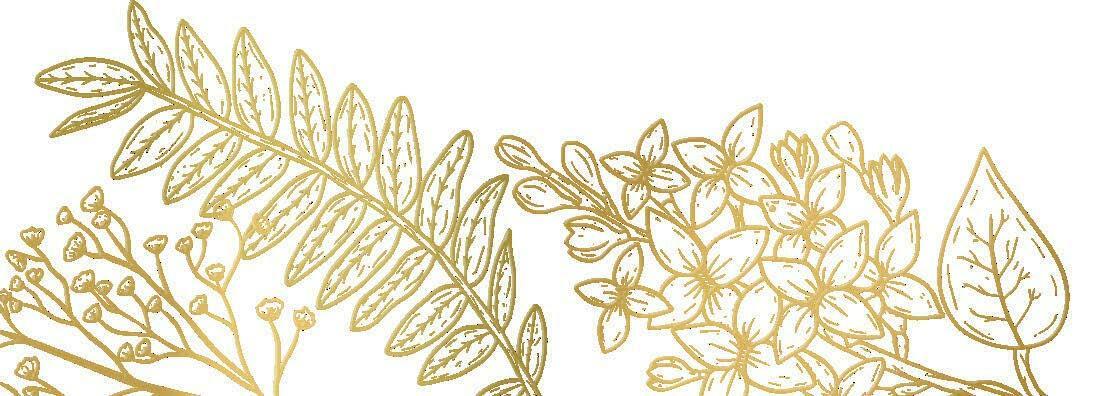


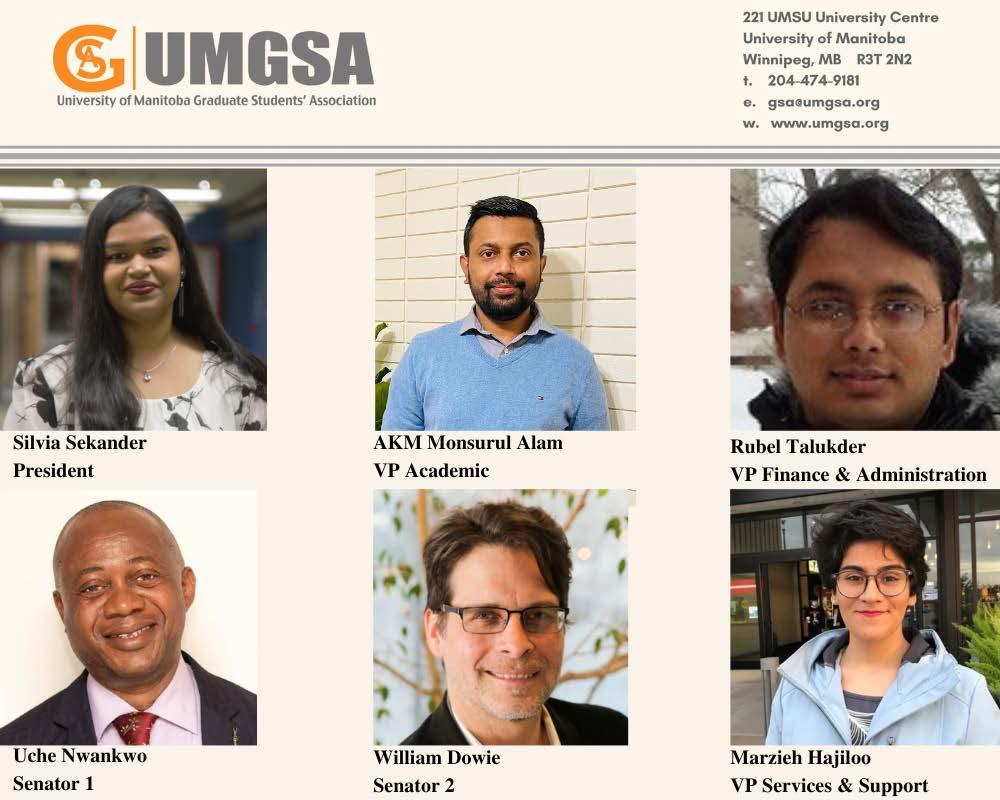
Winter! It’s not as bad as you think
Despite its bad rap, winter has its merits
Braden Bristow, staffI t is cold outside, which is a sure-fire sign that win ter in all its terror and splen dour has arrived. While win ter technically arrives on Dec. 21, for all intents and purposes we are living it currently. It is not hard to see why some people are critical of the win ter season, especially with temperatures in the negative 30s being commonplace.
Living somewhere where it gets so cold that if you go stay outside for too long you risk hypothermia can be difficult. However, in the Northern Hemisphere, the frigid winter season — like death — comes whether we like it or not, so we might as well try to see the positive.
While being equated with death is not a glowing compari son, there are great aspects to the win ter season. As it stands, it is a stage of nature that we should learn to live with. Most situations, winter included, have silver linings that continue to make life enjoyable even if they seem overbearing or difficult.
A prime example of this sil ver lining is that during win ter, there are numerous fes tivities and celebrations. Win ter solstice, Hanukkah and my personal favourite, Christmas, all land in the cold and snowy season this year .
These holidays are a great time to get together with friends and family. They’re an important reminder of how valuable these people are in our lives, and that all we really
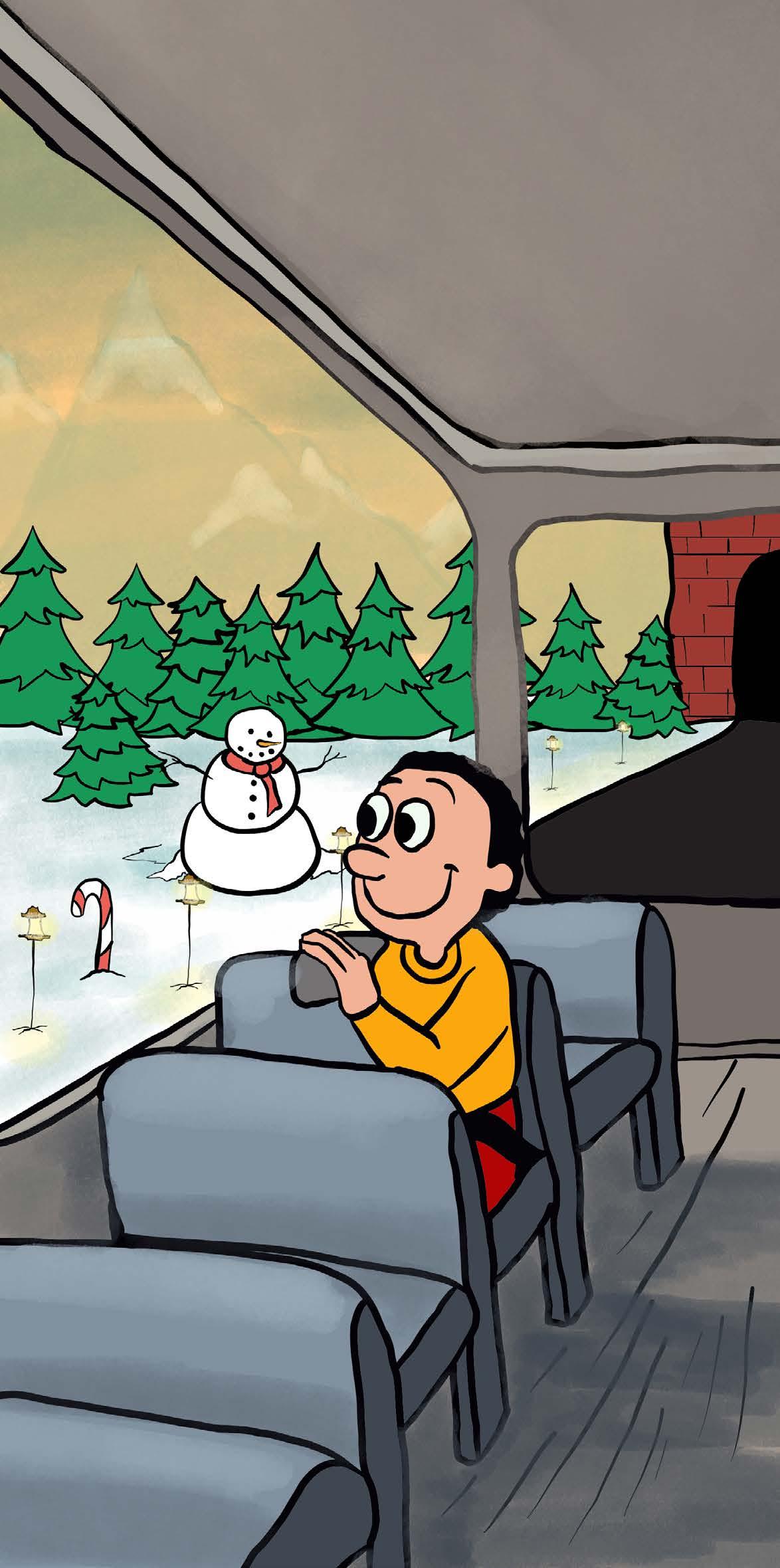
need is each other’s company.
The ceremonies of gift giv ing that are common to these holidays are just plain fun, and while the seasonal festiv ities are great, so too are the foods.
Peppermint candy canes might not be my favourite, but I feel a twang of excite ment when I open festive candy regardless of how much I actually like it. But pepper mint and other winter flavours pale in comparison to eggnog, which is unfortunately only sold in the few months sur rounding the holidays. I can hardly think of something more enjoyable than pour ing a cold glass of eggnog and watching snow slowly fall while being faintly illumin ated by the dim streetlights.
from its quality.
Of course, there are nega tive aspects of winter. Trudg ing through two feet of snow just to get home is far from luxurious, but it helps to look at the positive aspects of these things sometimes.
Being able to appreciate winter is a very human pleas ure, and it makes an admit tedly difficult season tolerable to the point of enjoyment, which is certainly worth something.
We are only on Earth for a certain amount of time, and the reality is that there will either be a winter every year you live in Winnipeg, or the season will eventually dis appear due to the climate crisis.
Which brings me to my next point: winter is a beauti ful season.
Of course, come the later months the muck and grime stains the snow and the roads are covered in black ice. But at least in November and Decem ber, the blanket of snow cov ering the rooftops and fields is undeniably beautiful. The long bus rides I take on my way home from school are made more bearable by the scenery of the Winnipeg win ter.
The beauty of winter is a simple thing, as in general the season is pretty much just a blanket of white, but I do not think its simplicity takes away
Regardless of the outcome, winter is going to be here for quite a long time, and I plan to enjoy it as much as I am real istically able to.
While you are free to dis agree with me or to do differ ently, I hope I have at the very least made you think a little more positively on the sea son, and reflect on some of the good times that it brings.
comment@themanitoban.comColonizing outer space ignores problems on Earth
Sarah Cohen, staffThe promotional video for NASA’s Artemis I mission depicts a return to the moon as being about learning how to live on other planets, in order to venture further out into space. To me, it sounds like the search for an escape route for when our time as earth-bound humans runs out due to the climate crisis.
NASA sent the Orion space craft and Space Launch Sys tem rocket out into the dark ness with no complications on Nov. 16, 1:47 a.m. EST, as the first phase of its Artemis mis sions. Artemis I is unmanned and will
orbit the moon, mostly to make sure the trip is possible without malfunction.
The next mission, Artemis II, will carry astronauts in the deep-space-equipped capsule around the moon as another test, before Artemis III puts the first woman and person of colour on the surface of the moon by 2024. Following this third mission, NASA hopes to send people to the moon on an annual basis.
The Artemis program will also establish a lunar sta tion known as the Gateway,
as well as the Artemis Base Camp. The Gateway will allow astronauts to live and work in space, conducting research to help put astronauts on Mars and advance the exploration of deep space. Artemis Base Camp is planned to include lodging on the moon’s surface capable of sustaining human life for as long as two months at a time.
As the possibility of astro nauts living on the moon inches closer to reality, coun tries like the U.S. are becom ing increasingly interested in the economic potential that the moon’s resources hold for things
like manufacturing.
Additionally, NASA expects Artemis missions to begin new industries and create new jobs. New jobs and indus tries are good economically, as they raise GDP and lower unemployment rates. This is good, however this kind of growth also has the poten tial to further raise emissions through the construction of new facilities and by fuelling the planes and cars needed to get people to work.
The interest in outer space has even extended to the mil itary industry, as there now exists a U.S. Space Force. Actually. I’m not sure if its purpose is to defend the U.S.
in intergalactic battle or to defend the planet against incoming space junk. Who knows if Artemis will eventu ally pave the way for a Space Force base on the lunar sur face — see Steve Carell’s Space Force for an idea of what that could look like.
All of this development cer tainly makes it seem as though the groundwork is being laid for the colonization of outer space.
However, I think that a sci entific organization as prom inent as NASA should be more concerned with keeping our planet from overheating.
It helps to look at the positive aspects of these things sometimes
Either we will die out or venture into space for extraterrestrial livinggraphic / Dallin Chicoine / staff
Internal conflict, silence and snow
SAD and sadness between changing seasons
The metal handles of Isbister’s doors are freez ing against my ungloved hand. My breath is visible through the vapour on my glasses, but as it begins to float away from my mouth and up into the night, the roar of the BLUE line rips it and the snow fall ing alongside it down Dafoe Road.
The street lamps bathe the bus stations in orange to cre ate something like warmth, but no lightbulb could win in a fair match against a Mani toban flurry’s chill. Yes, I think to myself as I turn from the bus station to the parking lot, it’s cold again. I’ve done this plenty of times in the past.
One more cold season in Winnipeg is just that — one more cold season. No mat ter how black the ice on the highway gets, and regardless of how fast it becomes night now. Even after my home has been reduced to a place to sleep, bathe and store my extra books, the notion that this is “just one more cold sea son” is repeated like a clapper striking inside a bell.
Although the thought of cold is so loud in my head, outside it is nearly silent. Did you know that snow can actually have an effect on the sounds you hear? The vibrat ing particles that make up the wave that’s supposed to reach your ears becomes trapped in the open spaces left in the gaps of a snowflake’s frac tal pattern. It’s comforting to know I’m not the only one for whom “quiet” has become even quieter.
Though short, the out door transitions that mark my movement between buildings and buses and cars become marathons when the white landscape casts isolation over the city. When your environ ment inspires strife, it tends to be pervading.
I notice more than usual when familiar faces fail to return a wave, or turn away when we make eye contact. It’s not that it’s happening more. Instead, the silence that the snow provides gives ample opportunity to think about these moments in greater clar ity.
Seasonal affective disorder (SAD) is a brutal game.
For those afflicted with SAD, the changing of the sea sons involves a number of fac tors that can incite or aggra vate depressive symptoms. Our circadian rhythms wage a vicious conflict against the darkening sky, while the few molecules of serotonin you have left attempt to keep your mood afloat.
Coupled with the exam sea son and the deadlines of final assignments, which loom only a handful of weeks ahead, dif ferentiating between sadness and SAD can become diffi cult — like trying to make out voices in a snow storm.
It might seem that my per spective on this skews nega tively, but it’s not like there are only bad things when it comes to the onset of winter. I can stomach the windchill for a little bit more to appreciate the way I can clearly see snow falling thanks to the artificial lighting that occasionally dots
the gloom.
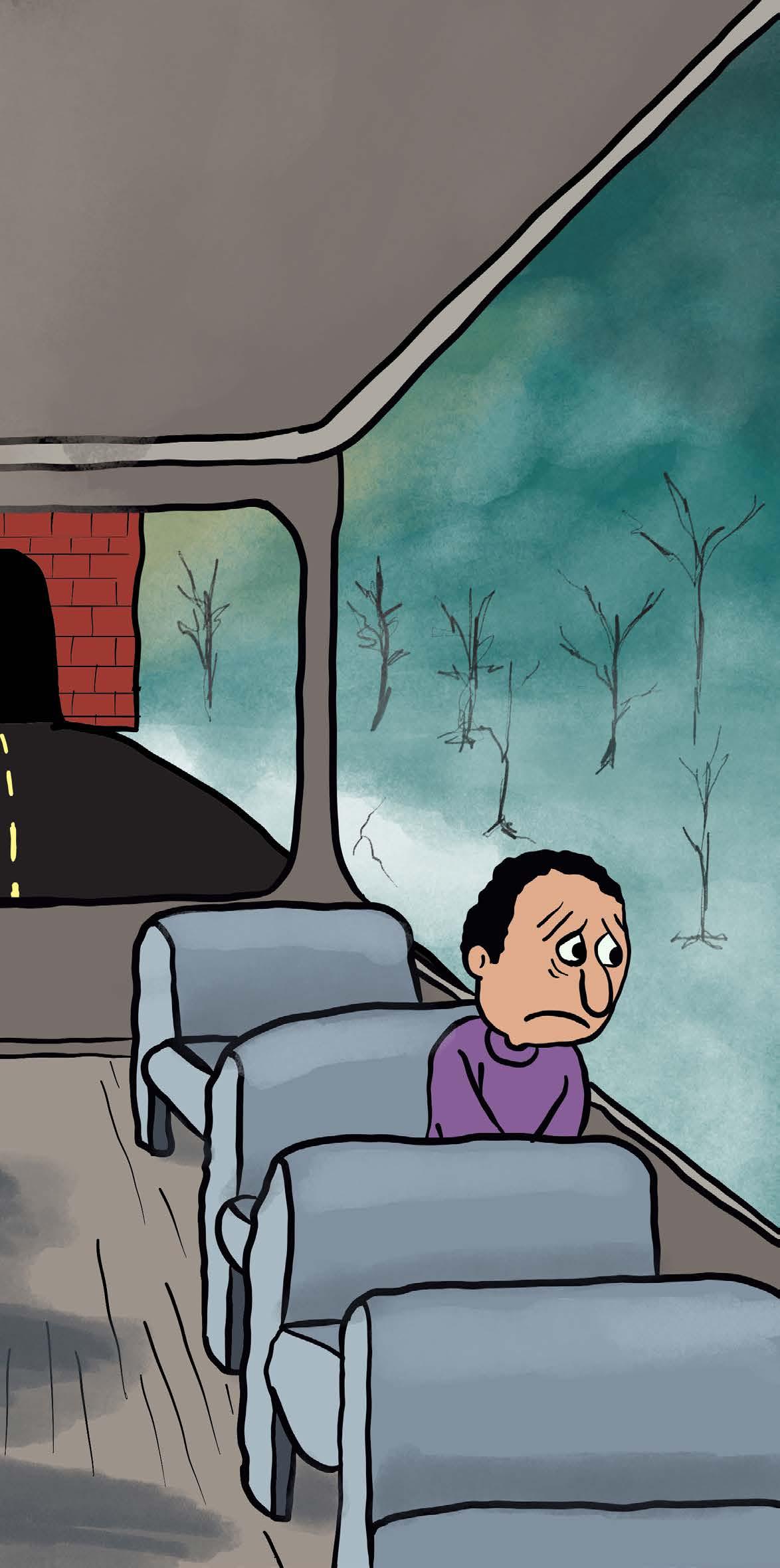
The thing about winter I appreciate the most is the silence. It can’t be fully dis placed from being the basis of my negative thinking, but it isn’t an inherently negative thing itself.
Although the symptoms of SAD can play a role in dis rupting your mood as the year winds down, the discomforts of winter are issues that all who live in this climate must face in some measure. Silence is not necessarily an isolation, it’s only reflective. When frost and fog cover the mirror, it’s common — if not fair — for perspectives to skew nega tively.
Being conscious of this con text is ultimately not enough to completely alleviate the feelings of SAD. It’s only the first step in creating a narra tive of mental health that isn’t fallible against the cold.
Winter can be dark, and not only in terms of daylight. In the past, the season has served as a period of hibernation, a time for hiding in silence and licking the wounds left by frostbite.
These days, an option to completely stop and rest through winter sounds like a luxury, so being aware of your own condition can be what makes the difference between making it to spring or remain ing trapped by the snow of “just one more cold season.”
LJ Fulugan, volunteer comment@themanitoban.comArtemis I starts missions to delve into research of the moon and beyond
< Cont’d from p. 12
The continued rise in tem perature of our planet has the potential to be detrimental to the human species. Rising sea levels, hotter and drier sum mers and more catastrophic weather patterns will all con tribute to the deterioration of the space humans currently take up.
There was a time before humans, and there will be a time after. I think that priori tizing expansion into space over solving climate change has the potential to contribute to the human species going extinct.
To me, the current focus on
outer space expansion sug gests a future where either we will die out, or venture into space for extraterrestrial liv ing. Kind of like the plot of Wall·E
Okay, quickly, let us ignore all the theoretical avenues I’ve taken. If the Artemis missions do what they are intended to do, research into deep space and our neighbouring planets could give us answers to ques tions that have been in circu lation since the time of Greek gods. Astronauts touching down on Mars’s surface might finally discover if life truly ever existed there.
Space is vast and may be humanity’s next home. On
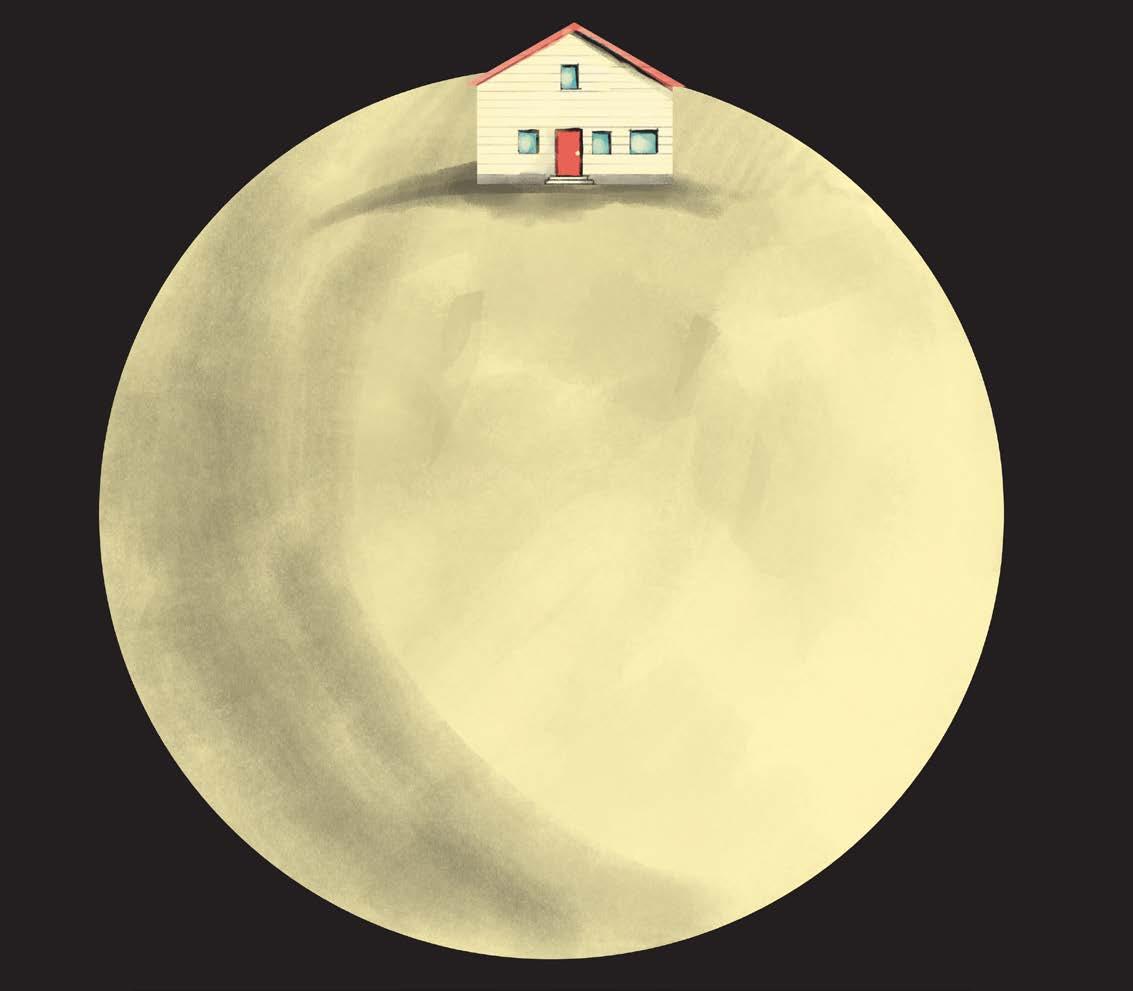
the plus side, NASA’s Arte mis missions have the poten tial to create jobs, grow our understanding of the uni verse we are situated in and maybe even establish another place for us to live. However, we need to make sure we are not prioritizing outer space expansion over the liveability of our planet.
comment@themanitoban.com
graphic / Dallin Chicoine / staffLike Sudoku, no single number can repeat in any row or column. But... rows and columns are divided by black compartments. These need to be filled in with numbers that straight is a set of numbers with no gaps but can be in any order, eg [4,2,3,5]. Clues in black cells remove that number as an option in that row and column, and are not part of any straight. Glance at the solution to see how ‘straights’ are formed.

To complete Sudoku, fill the board by entering numbers 1 to 9 such that each row, column and 3x3 box con tains every number uniquely

In Hidato, fill the board by continuing the chain of numbers from 1 to 100 mov ing any direction or diag onally to the next number.
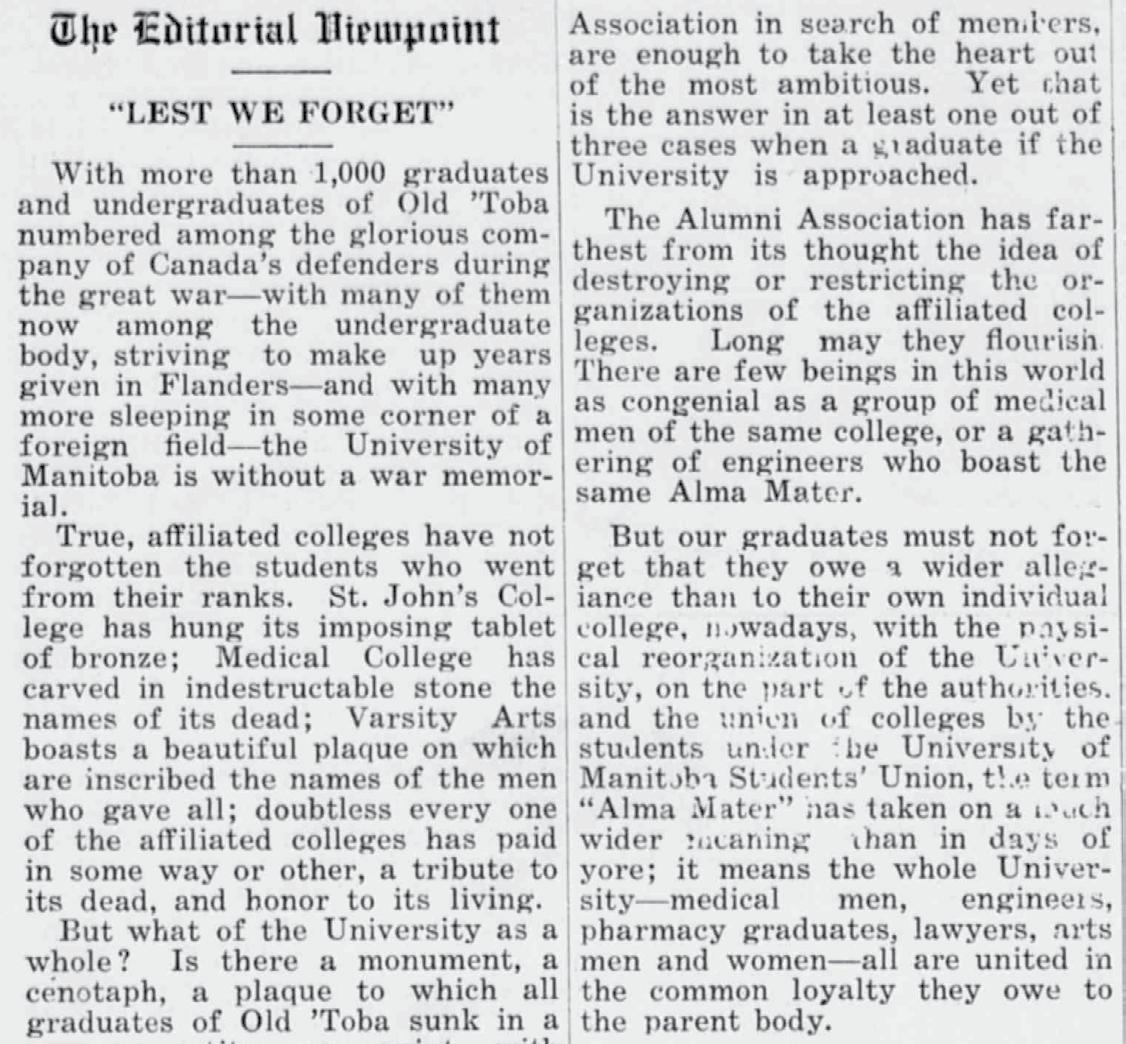
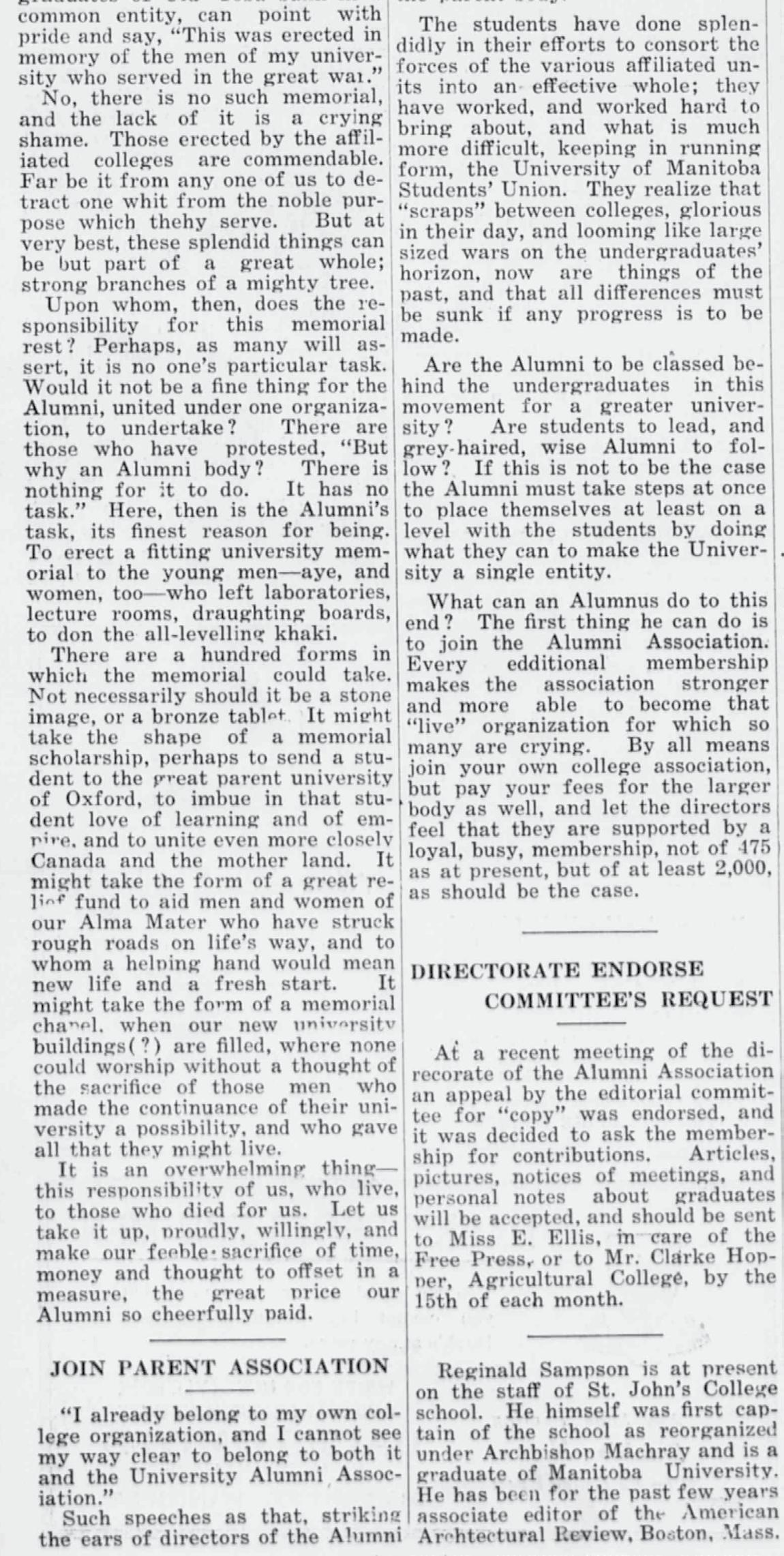

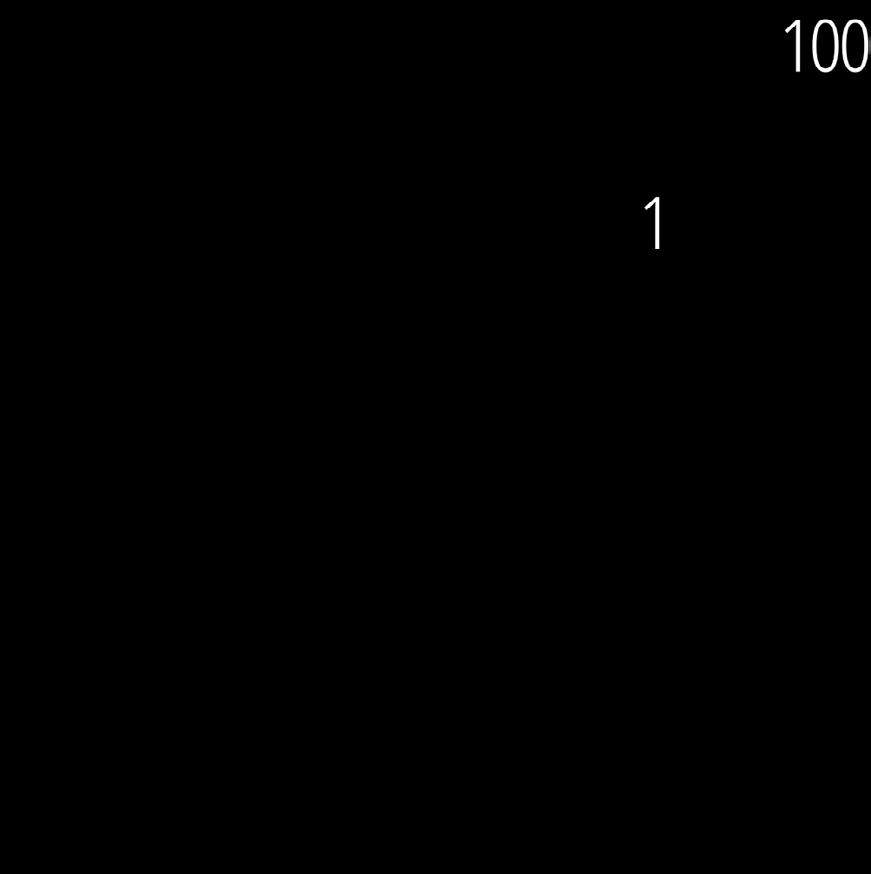


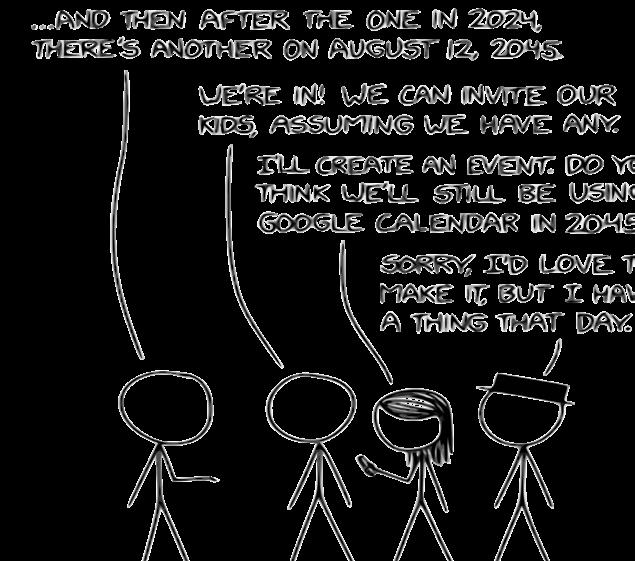
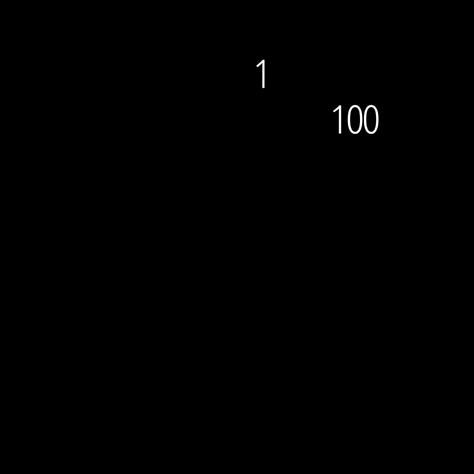










To complete Sudoku, fill the board by entering numbers 1 to 9 such that each row, column and 3x3 box contains every number uniquely.
For many strategies, hints and tips, visit www.sudokuwiki.org
If you like Str8ts check out our books, iPhone/iPad Apps and much more on our store. The solutions will be published here in the next issue.
In Straits, like Sudoku, no single number can repeat in any row or column. But rows and columns are div ided by black squares into compartments. These need to be filled in with numbers that complete a “straight.” A straight is a set of num bers with no gaps but can be in any order, eg [4,2,3,5]. Clues in black cells remove that number as an option in that row and column and are not part of any straight. Glance at the solution to see how “straights” are formed.
It’s weird making plans for eclipses.
“Sorry, doctor, I’m going to have to come in on a different day-I have another appointment that would be really hard to move, in terms of the kinetic energy requirements.”
Horoscopes for the week of Nov. 30
Zodiac tips for navigating life at the U of M
Damien Davis, staffARIES
Your tarot card for the week is Strength. What does it mean to be your own saviour? Your ability to be head strong in any condition will benefit you when you’re swamped with assignments, finals and inner strife. You are adept at never losing your footing. As the fall term comes to a close, ask yourself one question while picking at your lunch in the food court of University Centre — are you in control?
TAURUS
Your tarot card for the week is the Devil. What are you holding yourself back for? Something haunts the walls of University College, the ghosts of students who were too amenable in pursuit of far too much. Being consumed by others isn’t something you are known for, why be known for it now? Seek out the company of what soothes you most, and don’t be seduced by taking on more than you can handle.
GEMINI












Your tarot card for the week is the Hierophant. You are possessed by tradition and knowledge. You should remember, as a Gemini you are your own twin first. Your connection with your inner self this week will help you create the foun dations of your future after gradua tion. Let the voices of past genera tions sing to you. The Hierophant asks you: is it such a bad thing to secretly desire conformity?
CANCER
Your tarot card for the week is Temperance. By nature, you are car ing and empathetic, but it’s possible you’re not extending the same treat ment to yourself. Temperance asks you to treat yourself with the same div ine kindness you give to others, and to meticulously balance your course load. Foxes run wild in the prai rie fields, but you will win the race to winter break if you remember to put yourself first when the time comes.

LEO
Your tarot card for the week is Judgement. You are currently experi encing a reckoning in your life and you’re unsure of what you’ll be like when the sun rises. Remember, at your core you are loyal to the cause and the envy of the sun
itself. Hard times do not last for ever and neither do final exams. The image of a lion was a symbol of nobility and valour. Hon our that symbol by believing you will be more than fine come the holiday season.
VIRGO
Your tarot card for the week is the Hermit. It’s time to return to society. The work will always be there, but it’s time to emerge from the quiet dwelling of Father Harold Drake Library and remem ber what it means to be part of a community again. Your chances of getting good grades won’t slip if you get coffee with friends; in fact, a fun academic discussion with no grades attached might be exactly what you need.
’Toban Tips
Dear Toby, I am a year away from graduating and have to move out in a matter of months. I wake up at night with anx iety about how I will function in the world post-university. What should I do?
Sincerely, Anxious student
Dear Anxious student, I think a lot of people are in the same boat as you. Univer sity is a big part of early adult hood that helps us structure
our lives. Entering the next stage of life without a plan can be scary, but you will be okay.
When faced with anxiety or stress about something in the future, I find it helpful to take stock of my situation by doing things like keeping track of my finances and savings with a spreadsheet, and reminding myself of potential opportun ities. Remember to always keep your receipts!
Taking the situation by the horns, so to speak, can help you regain control of how you feel about it. Also, reminding
LIBRA
Your tarot card for the week is the Star. You are being encouraged to have faith. Stars might even tually die, but the comfort they provide as you thumb through your textbook late into the night is eternal. Yes, nothing in life is certain, but that isn’t a bad thing is it? You cannot bear the burden of bal ance all the time. It is more than fine to simply do your best.
SCORPIO
Your tarot card for the week is Death. Do not be afraid, death is not the end. This card symbolizes the end of a journey and the start of a new one. You govern your own trans formation and destruction — you are in control, and you always have been. If you are dissatisfied by the type of academic you are, this card encourages you to simply change. You are the herald of your own change.
SAGITTARIUS
Your tarot card for the week is the Moon. Secrecy is your ally this week. Your love of freedom and indepen dence could be your undoing should you forget that you are not immune to miscommuni cation and misinfor mation. Cite your sources, not just in your essays. What do you gain from anxiety about being with others?
CAPRICORN
Your tarot card for the week is the Lov ers. You are known for being the oldsoul, wise and ahead by a century. The Lov ers acknowledge you as a beacon of harmony and romance. Words flow through you easily this week when you bring your pen to paper, but love isn’t defined merely by romance. If you look closely among your peers, you’ll find that there are many forms of care and love surrounding you.
AQUARIUS
Your tarot card for the week is the Empress. You asked the oracles and they answered, but are you nervous about dependency? You’re struggling with lack of progress and back-toback classes. You never thought caf feine dependence was real until this term. Your idealis tic nature is your enemy this week. The Empress reminds you — giving birth to new ideas is only positive when there’s nothing else on your plate.
PISCES
Your tarot card is the High Priest ess. The moon is in its first quarter phase, and with it in Pisces you will experience an abundance of prosper ity if you keep everything in order. You’ve done well to move within spaces unnoticed, but perhaps now is the time to break out and take what you want by the reins. Keep a quarter in your back pocket to manifest income.
yourself that you are capable of success might seem like simple advice, but positive affirmations can go a long way. It is always helpful to find someone trustworthy to talk to. Expressing these anxieties is always easier with someone by your side.
Stay calm, remind your self that you will be alright, do some research for the future and make sure to take a deep breath when you are feeling overwhelmed.
Best of luck, Toby the Bison
To ask ’Toban Tips a question, email comment@ themanitoban.com.
An evening of blunders
UNRAVEL exhibit showcases disrespect for student art
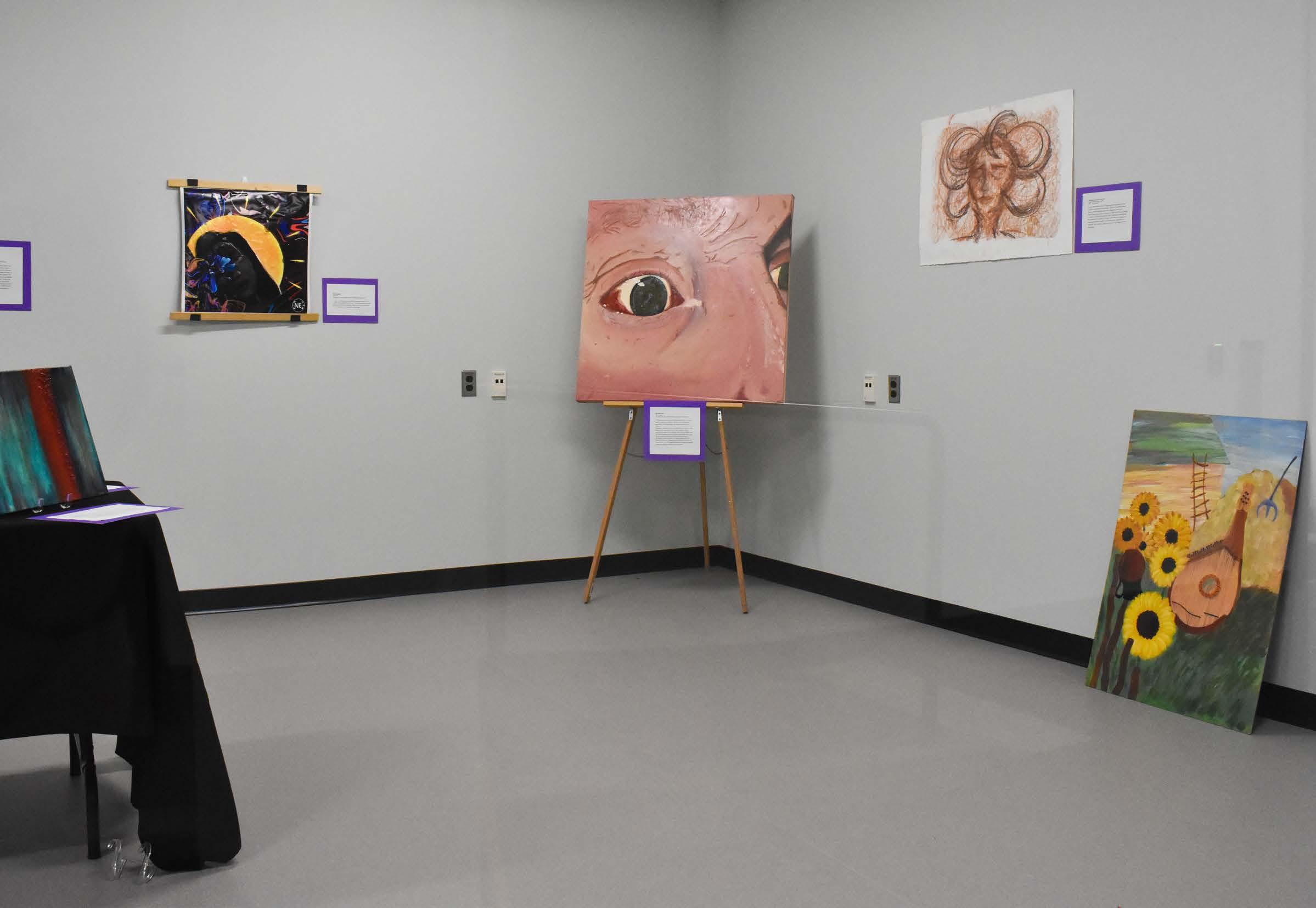 Ellen McGregor, volunteer
Ellen McGregor, volunteer
W alking into the open ing for the University of Manitoba Students’ Union (UMSU) UNRAVEL mental health art exhibit was start ling. I had submitted one of my paintings for the show and was excited to see it publicly displayed for the first time. My excitement quickly turned to shock, then dread as I walked around the exhibition.
The show was held Nov. 15 in a multipurpose room on the second floor of Univer sity Centre — a large, echo ing space with wood panelling and yellow lighting. Music blared from speakers in the corner loud enough to drown out thought, let alone allow for conversation.
Pieces were crudely hung with visible command strips. In place of placards describ ing the works were hand-cut labels tacked onto purple con struction paper, which listed the artists’ names but not the titles of the artworks. The labels also did not include the year the work was made or the dimensions, and some didn’t list the medium either.
Two digital pieces were pro jected onto crumpled screens, too dark in the bright room to be visible. One image was mis aligned, part of the projection illuminating the wall behind it and showing the settings menu at the bottom of the screen.
A hanging sculpture of a cloud was strung up on what looked like a damaged stand that would collapse at any minute. One painting was sat on a small table and leaned up against the wall in the corner. My own painting was propped
up on a flimsy easel.
The paintings of my class mate and fellow bachelor of fine arts honours stu dent Maryam Bagheri were attached to black metal tripods, dis played at waist height. The sticky note that organizers had asked artists to attach, ensuring a return of work was still stuck to the back of one of her paint
ings. Her phone number, stu dent number and full name were visible to anyone in attendance.
The exhibition was a disservice to not only the art pieces shown, but to the artists themselves
As the opening went on, a speaker came onto the stage set up on the other side of the room and asked for the people
Department of Psychology Teaching Award
CALL FOR NOMINATIONS
The Department of Psychology at the University of Manitoba has established a Teaching Award to recognize outstanding psychology teachers. Academic staff with faculty rank in the Department of Psychology are eligible.
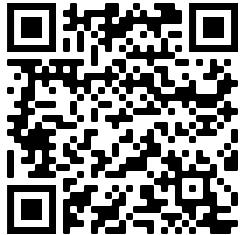
The Teaching Evaluation Committee of the Department of Psychology invites students and faculty to nominate academic staff for this award by completing a confidential nomination form. Nomination forms are available on the psychology website via the link or QR code below.
Nominations are encouraged and accepted year round; Those received by April 15th 2023 will be considered for the current academic year.
The Psychology Department Teaching Award is awarded in the spring of each year. Last year’s Teaching Award recipient was:
umanitoba.ca/faculties/arts/departments/psychology/about/teaching_award.html
in attendance to sit. I assumed we would hear a short speech from the organizers about the artworks, or a presentation from some one from the university on the subject of mental health.
Instead, we were intro duced to com edian Adam Grabowski, who on his website bills himself as a “mental health advocate and lecturer” who performs “socially conscious comedy.”
Having a comedian perform at an art opening about men tal health was already an odd choice, but Grabowski made sure it was a bad one too as he spoke to audiences members in an awkward, uncomfort able way.
While I was worried about being called out by Grabow ski, I left near the end of his very long set, apologizing to the friend I had brought with me.
I spoke with Bagheri the next day about the show, and her thoughts mirrored my own, saying she felt embar rassed by the exhibit and that the displays showed a disre spect for her work.
UNRAVEL was promoted as a mental health exhibit, and the call for artwork was sent out to university stu dents of any faculty. For stu
dents outside of the school of art, this may have been their first opportunity to show their work.
The resulting show was unprofessional and disheart ening. The curation felt like an afterthought, if it was thought about at all. It’s hard enough to put yourself and your art out there, especially when speaking on a subject as sensitive as mental health.
The exhibition was a disser vice to not only the art pieces shown, but to the artists them selves.
The UMSU organizers did not involve me in the installa tion of my works. They could have reached out to the school of arts’ student association for assistance in planning the event, or contacted the school of art gallery’s curatorial team for advice. But it seems like they didn’t even bother to Google search “how to hang a picture.”
Once the opening was dis mantled, the artworks were moved to room 102A, Uni versity Centre, a small room across from the UMSU Ser vice Centre. There, artworks sat on the floor, not hung up for a time.
Looking back at 150 years of the Winnipeg Free Press
Upcoming exhibit looks back on decades of fact-based journalism
Damien Davis staffThe Winnipeg Art Gal lery (WAG) is holding an opening celebration for a new exhibit commemorating the 150th anniversary of the Win nipeg Free Press this upcom ing Friday, Dec. 2.
Headlines: The Art of the News Cycle will feature a pleth ora of mixed media pieces in relation to the 21st-century news cycle and the history of local news.

Doors for the free event open at 6 p.m., and atten dees will hear from editor of the Winni peg Free Press Paul Samyn, WAG-Qau majuq direc tor and CEO Stephen Borys and head of collections & exhibitions and curator of Canadian art at WAG-Qau majuq Riva Symko.
“What’s unique about this exhibition in particular is that it’s kind of a blend between a meditation on the media and news itself, whilst also think ing about the local context, in
relation to the Winnipeg Free Press in particular,” Symko told the Manitoban
Each contemporary art work in the show will have a corresponding deep dive activity. Attendees will be pro vided iPads with poll ques tions ranging from how much time they spend with a news paper to stories they would like to see in the Free Press.
“Halfway through this exhibition planning, I started to see the space myself as just a space to actually meditate
ofon something that we con sume every day, whether we want to or not, and just space to think about how and what we’re consuming,” Symko explained.
She later added that she wants to know what journal ists themselves have to say in regards to the exhibit.
“I’m interested to hear their
take on something that is dif ferent for someone like me, who is involved in art every day, who of course consumes media but isn’t involved in the actual making of it,” she said.
“So I’m interested to see what some of our local repor ters, local journalists [and] local newsmakers have to say too.”
When asked what he hoped attendees would take away from the exhibit, Free Press editor Samyn said he thinks “there is a bit of similarity between art and journalism in the sense that there’s a way stories can be told, and ideas expressed.”
“Obviously art tends to move by way of a canvas,” he said. “They have paint, we have ink.”
Samyn believes the exhibit will also showcase a duality of both the growing aware ness and growing concern regarding the importance of “independent, fact-based journalism.”
’Toban turntable Dangler — ‘Sunny Day Lake Music’
Alex Braun, staff4.5/5 stars
Sunny Day Lake Music is both a completely apt and ironic way to name the debut compilation EP from Dan gler. There is a sort of musical
breeziness to some of the tunes and arrangements, but thematically it could not be any further from a sunny day on the lake.
Dangler is the new est pseudonym for Lino D’Ottavio, who has gone by
many other names, perhaps most notably releasing a num ber of drone projects under the pisces// moniker.
D’Ottavio was also a mem ber of the great band Base ball Hero, and is a fairly pro lific produ cer and engin eer, working on projects by Jamboree, meadows and Viewing Party.
Sunny Day Beach Music is the first real solo pop rec ord he has released. It com piles songs from the past five years, most of which were written long ago but modified recently.
Opening track, “But I” is a quick burst of desperate, self-lacerating energy. It even tually builds from its stark guitar and vocals, opening to an overblown noise folk mid dle section reminiscent of Ele phant 6 recordings.
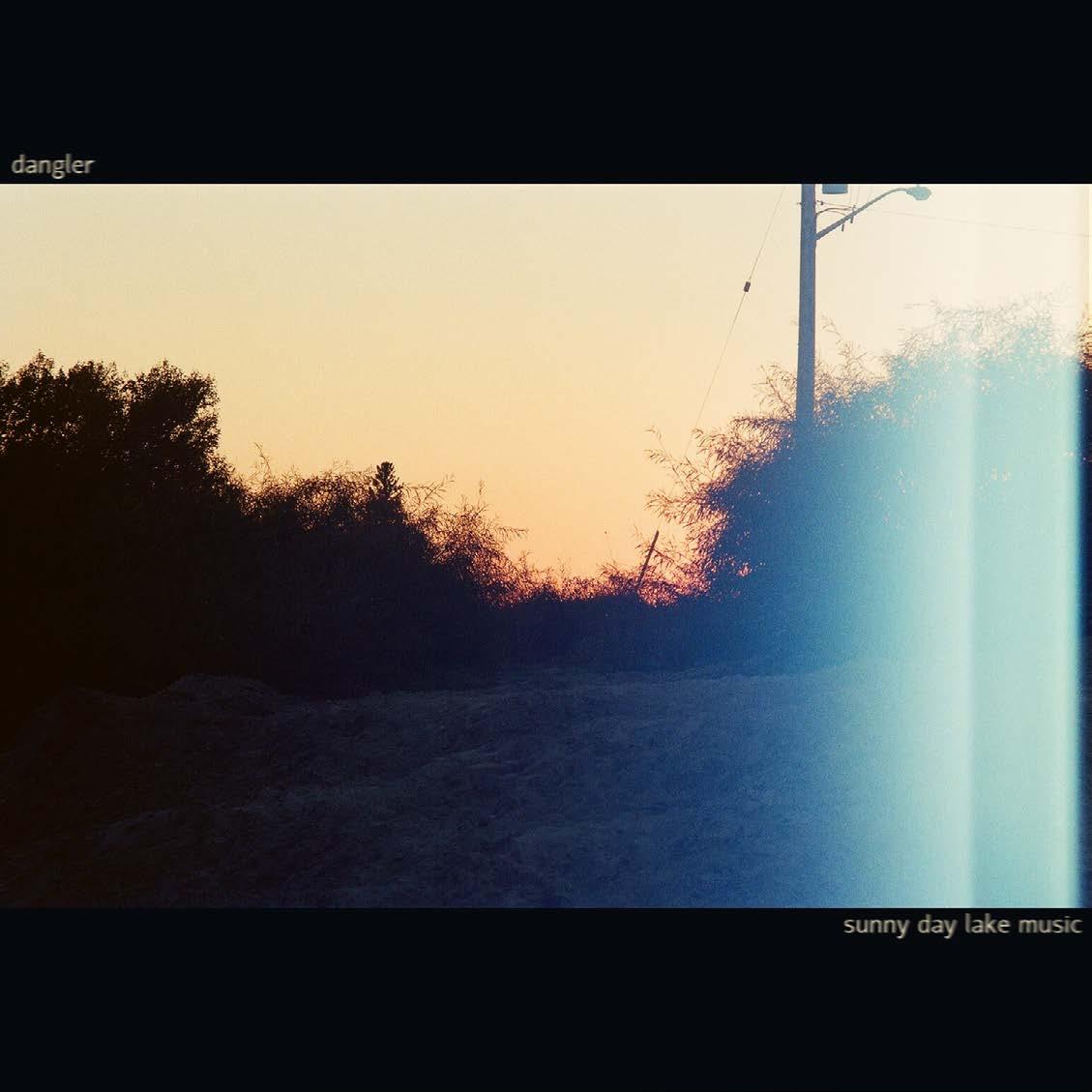
“U Know” opens as a breezy indie rock strummer, but eventually builds to a loose guitar solo and a mess of back
“As much as this exhibit in part is marking the 150th anniversary of the Free Press and our history in this prov ince, I think it’s also about the future,” Samyn said. “Democ racy is under threat, in part because there’s a lot of dis information and a lot of mis information, and people are able to exploit people’s lack of knowledge, lack of aware ness.”
“This exhibit lands at a place and a time where there needs to be a really good dis
cussion and understanding and appreciation of a news paper like the Winnipeg Free Press, and the role that news papers and fact-based journal ism play in our society.”
Headlines: The Art of the News Cycle will be on display at the WAG from Dec. 2, 2022 to May 21, 2023.
arts@themanitoban.com
ground screams after the song’s concluding lament that “everything hurts.”
“Grody” is an unappeal ing title for what is a quite pretty piece of slowcore-in flected balladry that verges on anthemic, despite its defeated tone. Gang vocals and soaring lead guitar lines intertwine in the song’s uplifting middle section for a real lighters-inthe-air rock moment.
“Ear” is possibly the high light of the record for me. A pop song with a massive chorus and a bouncy, slightly bossa nova verse section that is made just the right amount of obtuse, with loose, lo-fi drum tracks and another dose of overblown production in the song’s climactic final chorus.
“New Wave” is a sharp left turn into synthpop, and leads
well into the gorgeous ambi ent interlude, “Sand,” that drops us straight into the bub bly final track.
“Beach Song” is almost a love song, and notably more self-assured lyrically than the other tracks. It’s a great closer, feeling genu inely climactic on an album filled with high points.
Sunny Day Lake Music is some of the most detailed, spirited and exciting indie rock to come out of Winni peg this year. Rock fans of all stripes, listen up.
Sunny Day Lake Music is available on major streaming services arts@themanitoban.com
“They have paint, we have ink”
Paul Samyn, editor
the Winnipeg Free Pressphoto / WAG / provided
Some of the most detailed, spirited and exciting indie rock to come out of Winnipeg this year
Four books for thinking critically about love

Critical theory for coping with cuffing season
Jessie Krahn, staffC uffing season is upon us, that time from late fall to early spring when couples seemingly pop out of the ground. At times like these, and with my eye on the socially exhausting holiday season ahead, I turn to nerds to cope.
Here are four books that encourage lonely, loveless and lovelorn readers to think critically about their notions of love. Each one is available through the U of M libraries.
A Lover’s Discourse: Fragments by Roland Barthes
Who better to get the ball rolling than the unrestrained Roland Barthes?
A Lover’s Discourse is a maniacal meditation on love. Barthes gathers quotes or “fragments” from literature and life, systematically sorts them into categories based on romantic ideas and muses about them grumpily.
On top of reading like the diary of a jilted English major, the book roves through its over 80 concepts like “ador able” and “tenderness” in an
absurd alphabetical order.
I read this during Valen tine’s weekend in 2021 instead of focusing on coursework. Before that, I had never read such a bitterly soft examina tion of love. Barthes writes out the thoughts you might keep to yourself, such as “should I telephone or shouldn’t I?” and he is good at making you feel a little less alone with them.
Desire/Love by Lauren Berlant
Have you ever caught yourself daydreaming about bumping into a stranger so gracefully that they fall in love with you, and you both frolic into the sunset? That is prob ably not a fantasy you came up with alone.
There are ideas about love that come to us externally, according to Lauren Berlant. Part of the reason for this is that the people seeking to realize fantasies are also pay ing customers in the making.
Berlant’s writing is rife with knifelike insights on tender subjects. In this book, they work through the ways that notions of love and desire come to us from a homo
phobic and consumerist cul ture.
Berlant thinks the aesthet ics of love work like the engine of some industries — love aes thetics generate demand for solutions by producing single people who are desperate for them.
Berlant will help you won der who benefits from your daydreaming.
The Cultural Politics of Emotion by Sara Ahmed
Sara Ahmed does not just write about love in this book, but love is an important part of her project. She notices that we extrapolate our ideas about love from interpersonal contexts to national politics.
For Ahmed, love is a rec ognition of likeness. We love someone or something because they seem to be close to our ideals.
She examines rhet oric from right-wing fascist groups, which frames those groups’ violence as love for their nation. A lovable nation for fascists is one which approximates white suprema cist ideals.
As grim as the content of
Ahmed’s book sounds, she fills it with light. Ahmed is one of the few living philoso phers who I am a sincere fan of. She will get you to sideeye those popular representa tions of love that usually seem to appeal to everybody, and wonder why they are so easily co-opted.
All About Love: New Vi sions by bell hooks
The author bell hooks is an inevitable feature on lists like these, and that is for good rea son. Her book is a grounding intersectional intervention in the genre of self-help litera ture.
In surveying other influ ential self-help works, hooks points out the ways these texts overlook the influence of class, race and gender in our relationships.
Most of all, she stresses that finding love is not just up to individuals’ self-improve ment, as much as self-help literature might suggest that it is. Loving relationships are reciprocal. They are built through conversation, cour age and collaborating through conflict.
What sung to me in hooks’s work was her reminder that there are other kinds of love in our lives besides romantic love, and our romantic rela tionships should abide those other loves.
We fuse fragments of stor ies we tell about love into a bricolage of stereotypes and unattainable myths. No won der the prospect of find ing love in a season when it is apparently in abundance stresses people out!
There is no shame in being single. Romance is not a magical thing, it is a human experience susceptible to the same distortions as anything else.
That does not mean you should cull the hopeless romantic in you, though. It is okay to be open to possibil ities, and to be hopeful that you will experience them. We all have love in our lives. Who is to say a little more is not on the way?
Bisons swim team take s on Canada West Championships

Herd have multiple-podium finishes at annual championship
Quinn Mayhew, staffThe Bisons swim team attended the yearly Can ada West Championships this past weekend. Hosted this year at the University of Leth bridge in Alberta, the cham pionship yielded a varying array of results spanning over the three-day swim meet.
With the high expectations to perform leading up to this swim meet, the herd swam as to be expected when going from low-altitude training to high-altitude racing. Despite this challenge, the herd per formed well.
The meet was a success for veteran Bison swimmer Dora Modrcin, who achieved three podium finishes and contrib uted 63 points to the team’s overall score.
Modrcin’s success can be seen in the 50-metre butterfly, the 50-metre backstroke and
the 50-metre freestyle. Finish ing second in the butterfly and third in freestyle, she took time off both of her prelimin ary runs.
Placing third in backstroke, however, came as no surprise for the sprint backstroke phe nom, who placed first in the same event in last year’s Can ada West Championships.
Third-year swimmer Megan Mozill also met expectations with her backstroke podium finish.
Mozill — another back stroke phenom — achieved her podium finish in the 100metre backstroke with a final time of 1:01.06, placing third.
Both Mozill and Modrcin were indispensable this meet, achieving multiple podium finishes and contributing the greatest number of points for the team.
Another notable perform
ance was swum by secondyear swimmer Kelsey Fillion, who achieved a fourth-place finish in the 100-metre free style with a time of 56.37, tak ing off an impressive 0.53 seconds from her prelim time.
The men’s portion of the team stepped up to the plate this championship meet, with fourth-year swimmer Carson Beggs performing well in his 200-metre breaststroke. Beggs placed 11th with a final time of 2:19.19, reducing his prelimin ary time by a whopping 3.27 seconds.
Rookie Ella Howe also stood out this competition, con sistently making finals and stepping up to the plate as an instrumental part of the team.
This year, the swim team finished the meet with a total of 365.5 points, falling short of last year’s 2021 Canada West Championships where it
racked up a total of 575 points.
The women ranked fourth overall and the men ranked seventh, mirroring last year’s championships results exactly.
With the team finishing this year’s championships with significantly less points than the year before, it can be assumed that the lack of points was, at least in part, an altitude problem.
The team really persevered in this competition despite the less than ideal circum stances — earning medals and placing well in several events
despite not achieving all the podium finishes that were expected.
With the 2022 Canada West Championships now over, the Bisons can look forward to more fast racing and training going into the holiday season, as the team’s next competi tion is just around the corner.
Swimming fans can look forward to the annual Prai rie Winter Invitational swim meet back home from Dec. 16 to 18.
sports@themanitoban.com
The herd swam as to be expected when going from low-altitude training to high-altitude racingphoto / Faith Peters / staff
Sports teams’ schedules
U of M Bisons — Women’s Basketball

Bisons @ Regina Cougars
Nov. 25 — Final: 62 – 75 Bisons @ Regina Cougars Nov. 26 — Final: 82 – 91
Saskatchewan Huskies @ Bisons Dec. 2 — 6 p.m. Saskatchewan Huskies @ Bisons Dec. 3 — 5 p.m.
U of M Bisons — Women’s Hockey
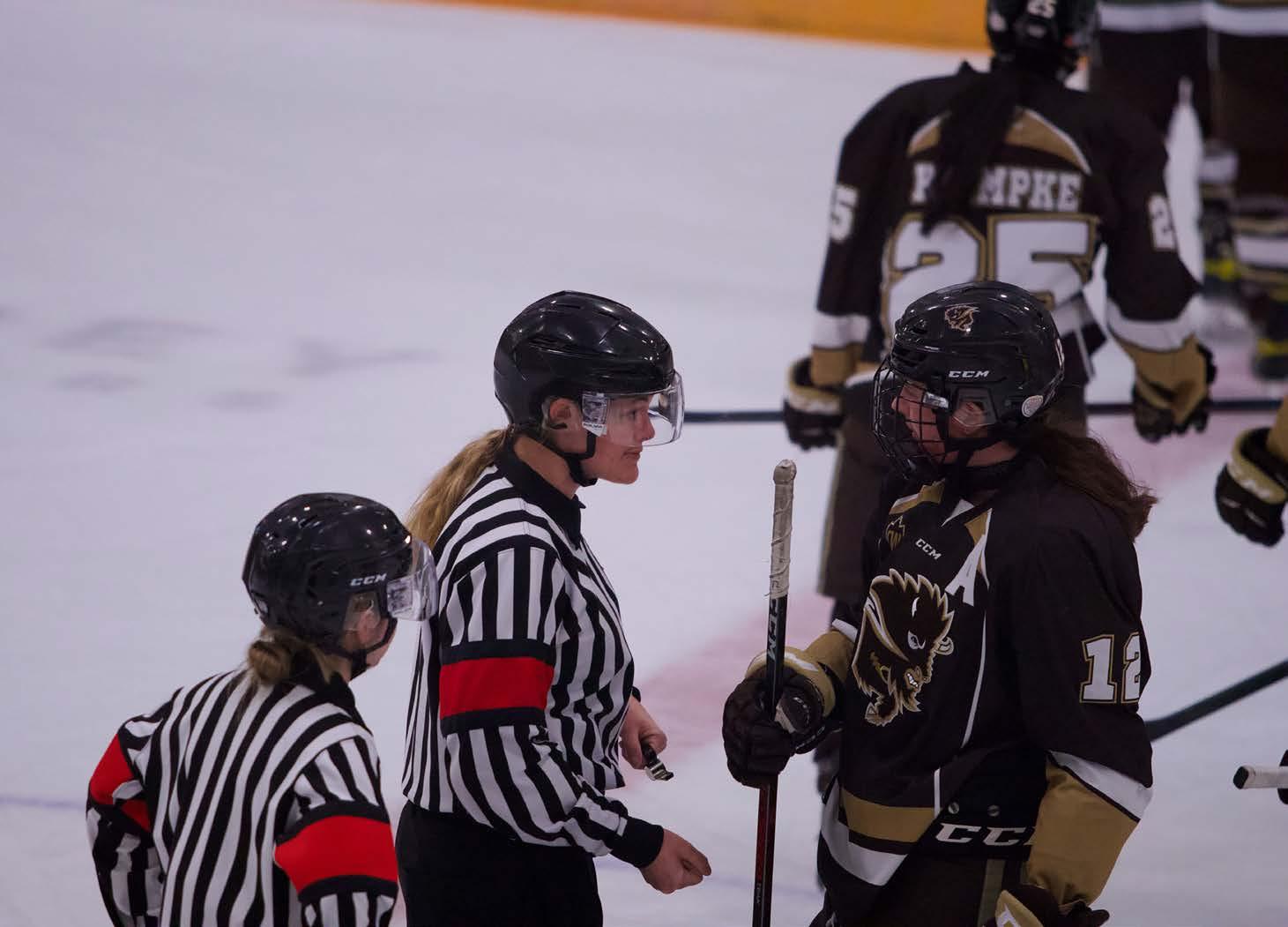

Saskatchewan Huskies @ Bisons
Nov. 25 — Final: 2 – 3 Saskatchewan Huskies @ Bisons Nov. 26 — Final: 6 – 2
U of M Bisons — Women’s Volleyball
Regina Cougars @ Bisons
Nov. 25 — Final: 1 – 3
Regina Cougars @ Bisons Nov. 26 — Final: 0 – 3 Bisons @ Mount Royal Cougars Dec. 2 — 9 p.m. Bisons @ Mount Royal Cougars Dec. 3 — 6 p.m.
U of M Bisons — Men’s Basketball
Bisons @ Regina Cougars
Nov. 25 — Final: 85 – 76 Bisons @ Regina Cougars Nov. 26 — Final: 73 – 81
Saskatchewan Huskies @ Bisons Dec. 2 — 8 p.m. Saskatchewan Huskies @ Bisons Dec. 3 — 7 p.m.
U of M Bisons — Men’s Hockey
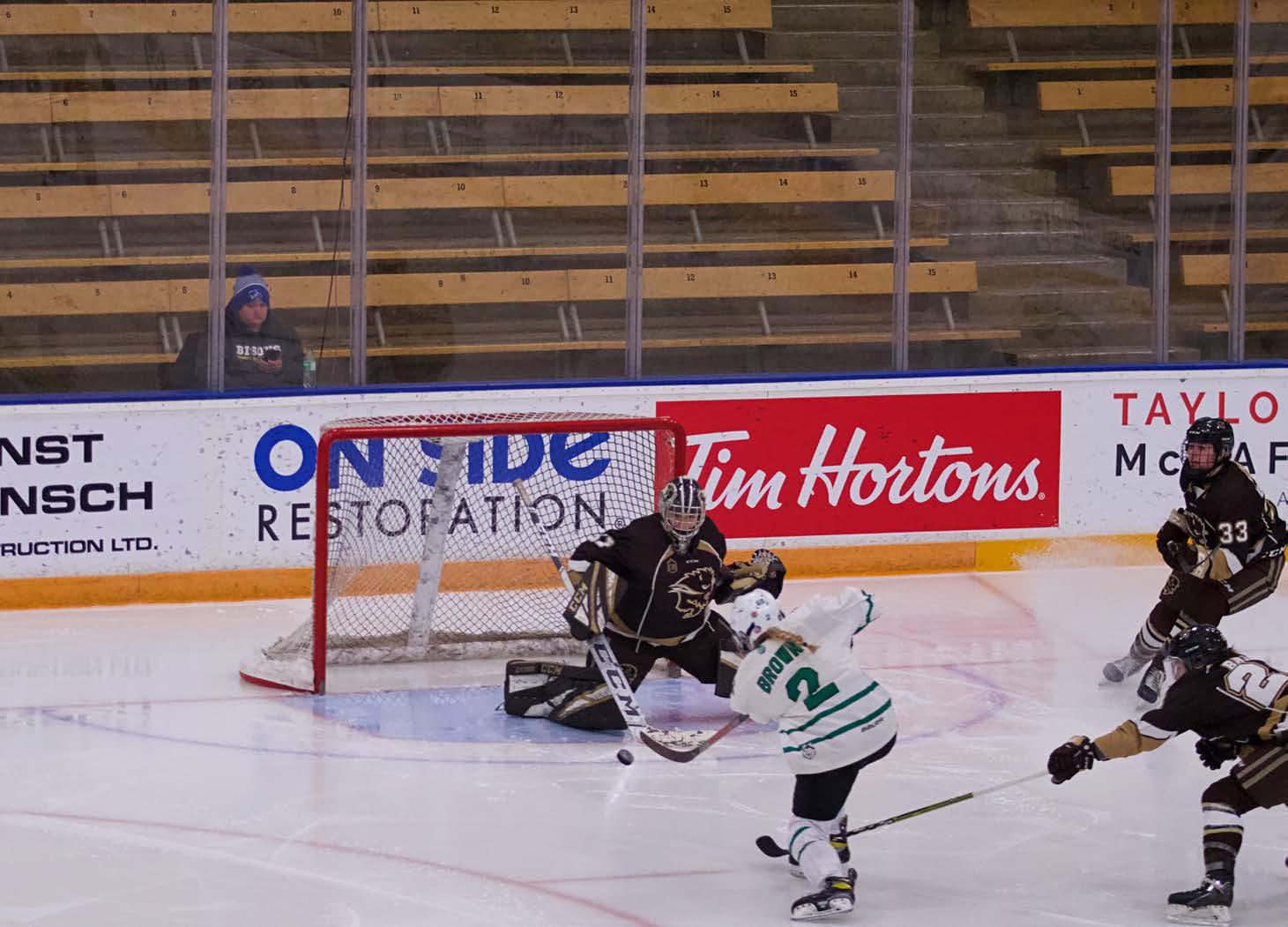
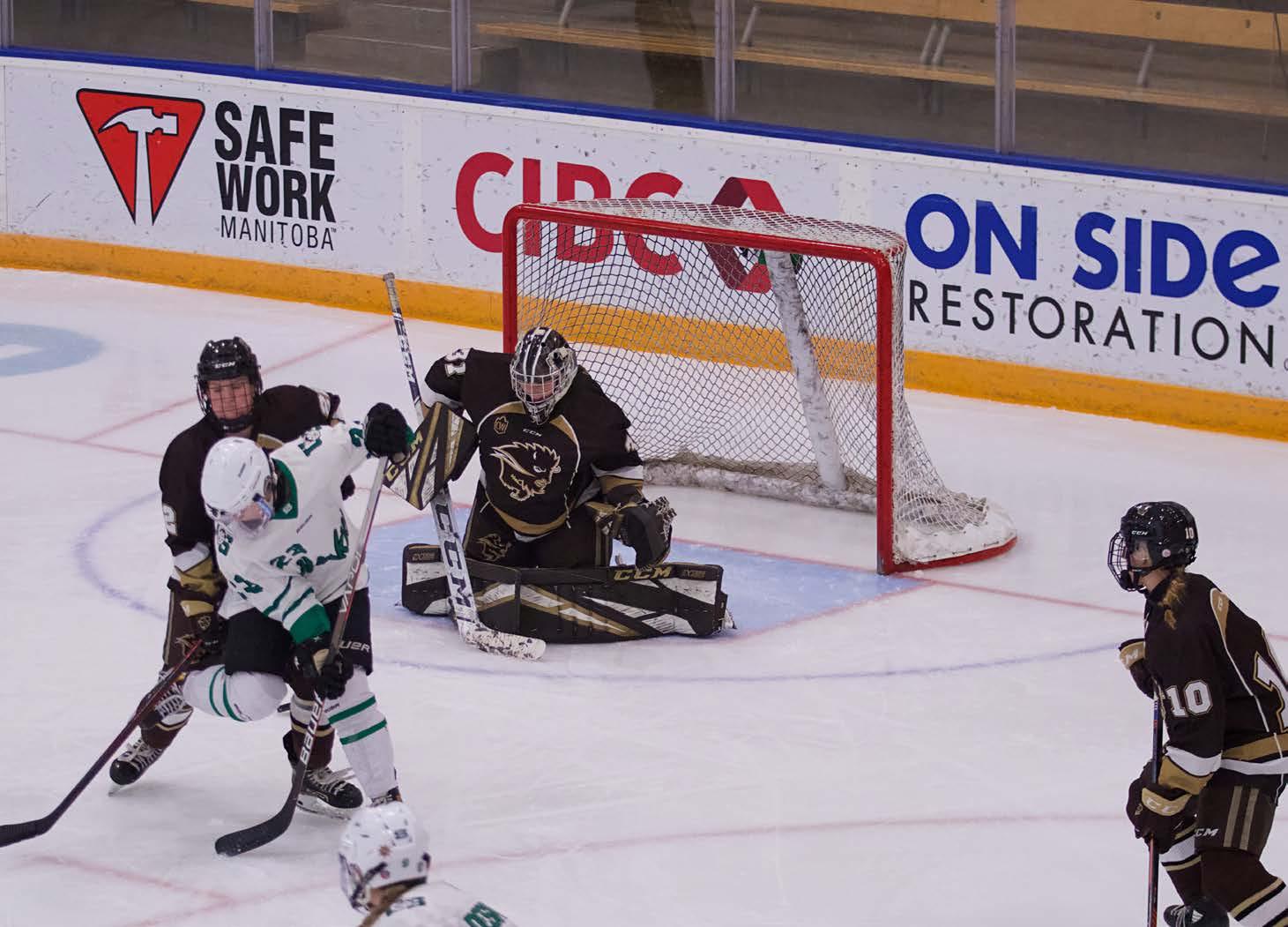

Bisons @ Saskatchewan Huskies

Nov. 25 — Final: 3 – 2 / OT Bisons @ Saskatchewan Huskies Nov. 26 — Final: 3 – 4
U of M Bisons — Men’s Volleyball
Bisons @ Mount Royal Cougars Dec. 2 — 7 p.m. Bisons @ Mount Royal Cougars Dec. 3 — 8 p.m.
U of M Bisons — Track and Field
George Tanner Memorial Classic Dec. 3
Winnipeg Jets
Nov. 23 — Final: 1 – 6
25 — Final: 5 – 4 / OT
Nov. 27 — Final: 7 – 2
29 — 7 p.m.
2 — 7 p.m.
Dec. 4 — 2 p.m.
6 — 7 p.m.
